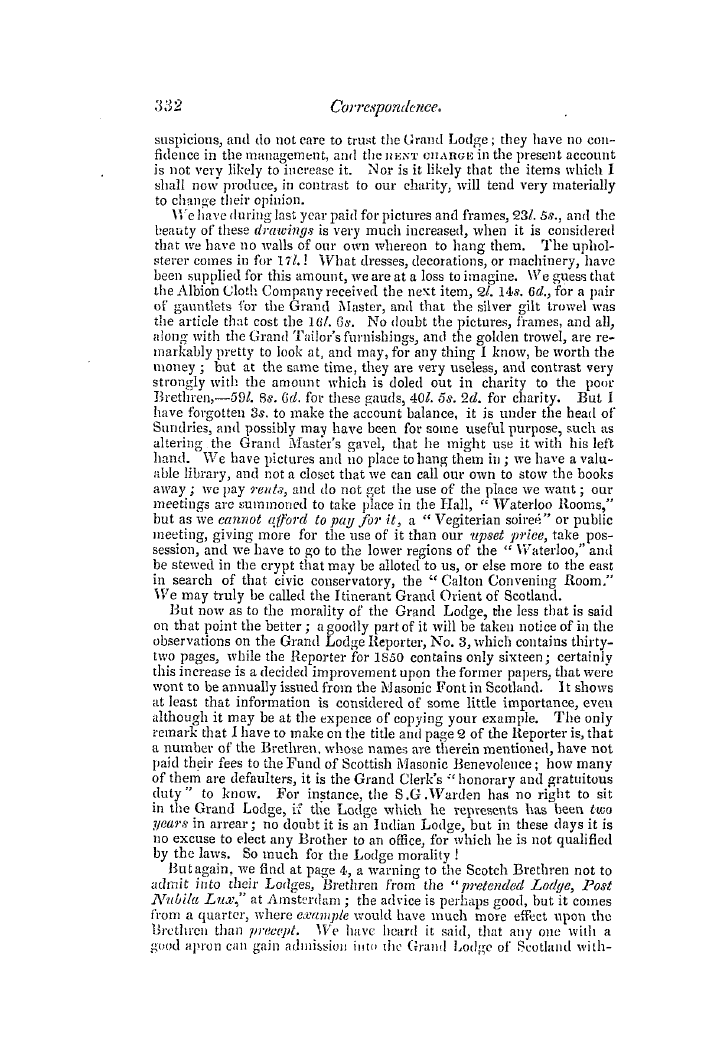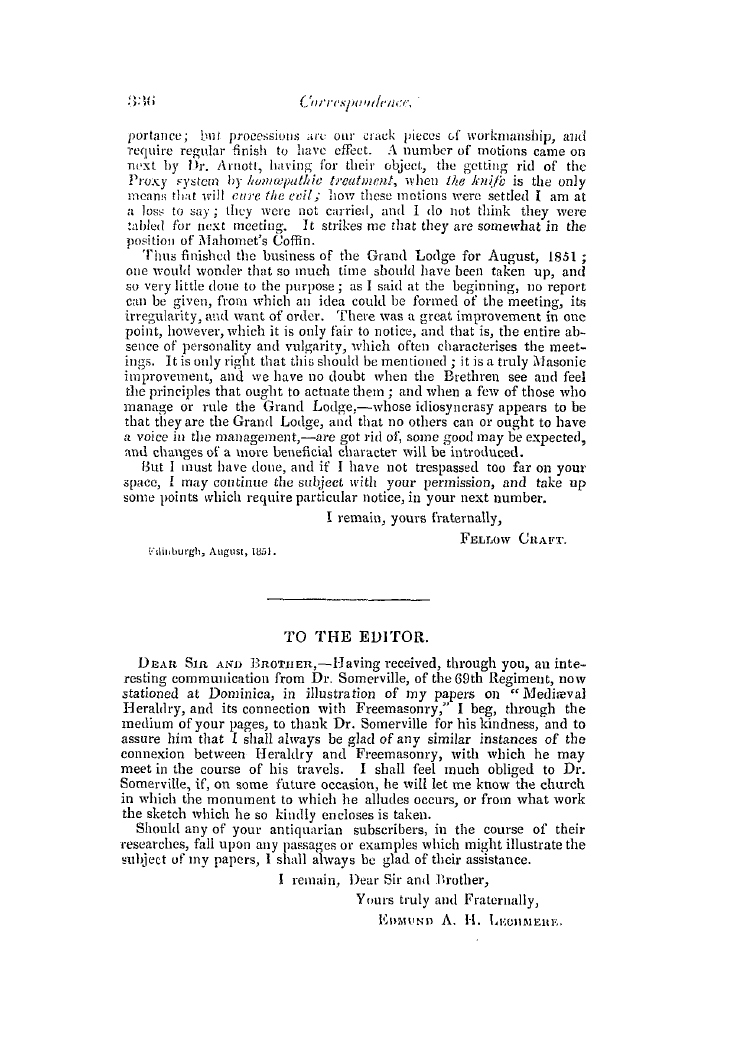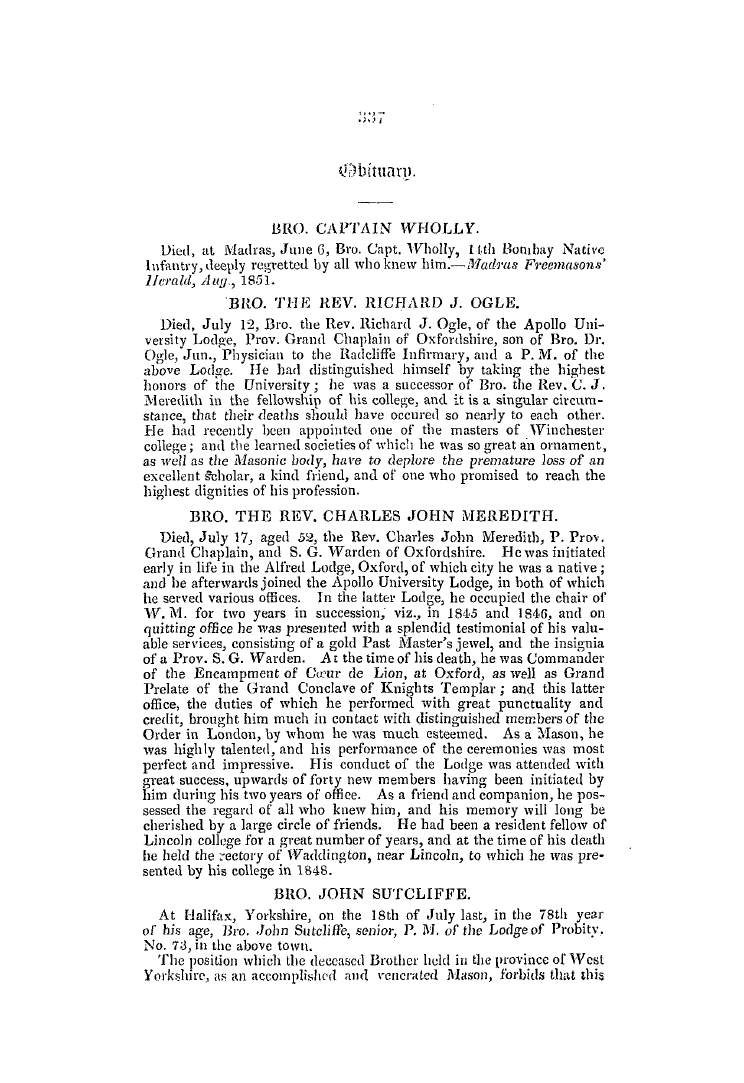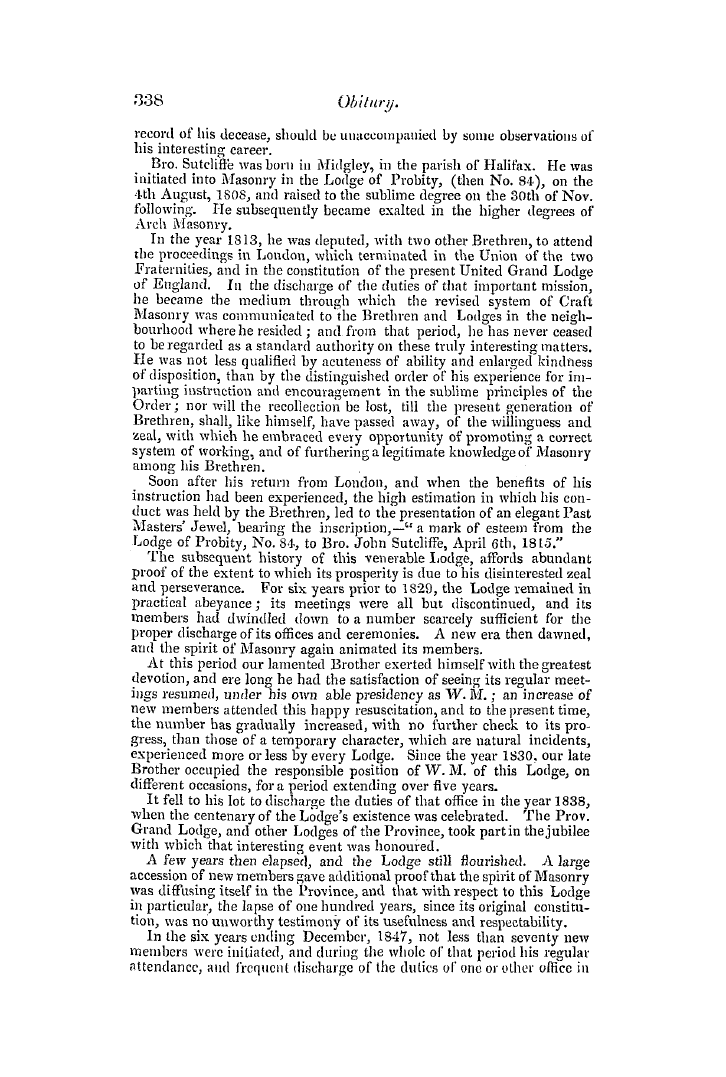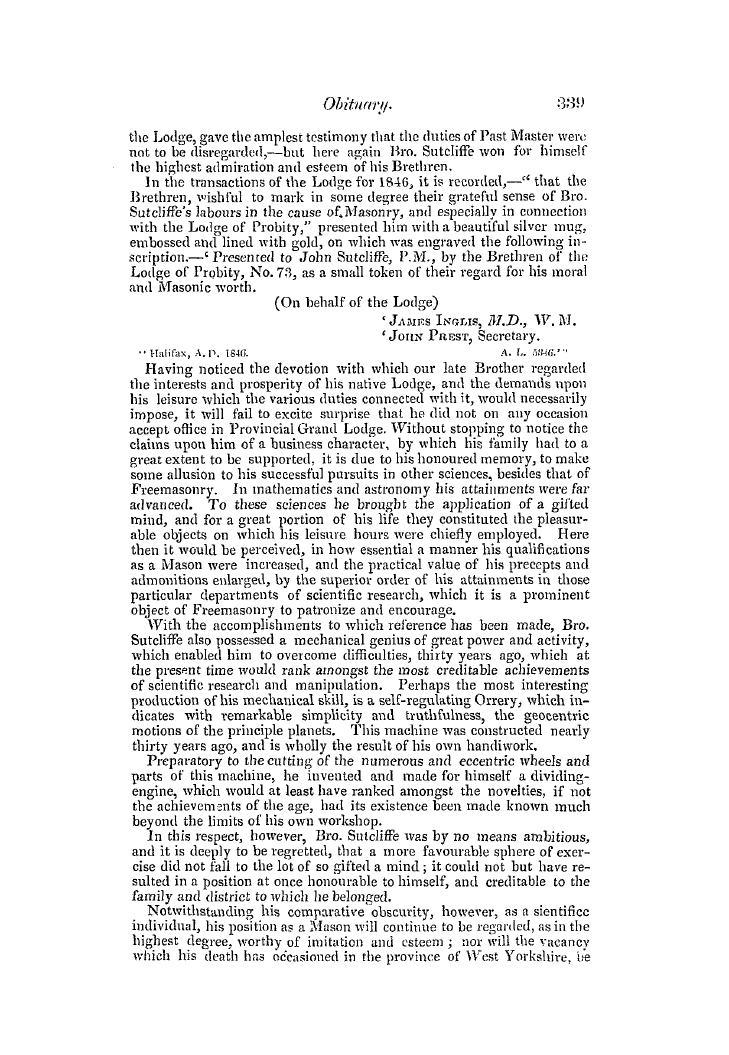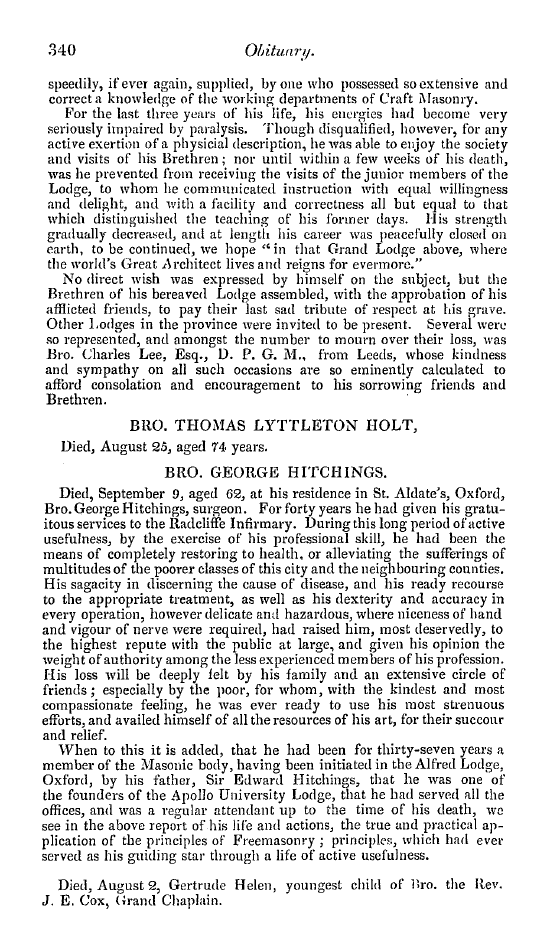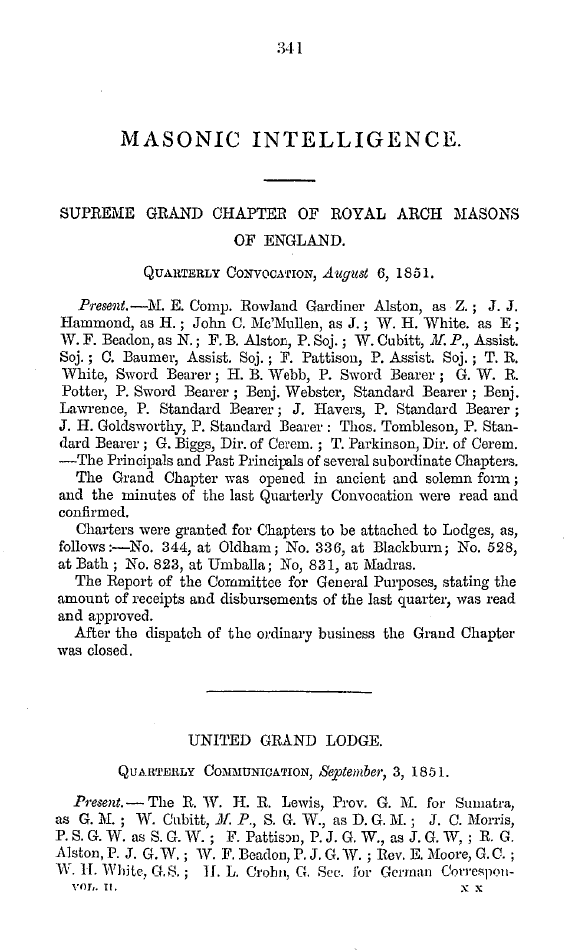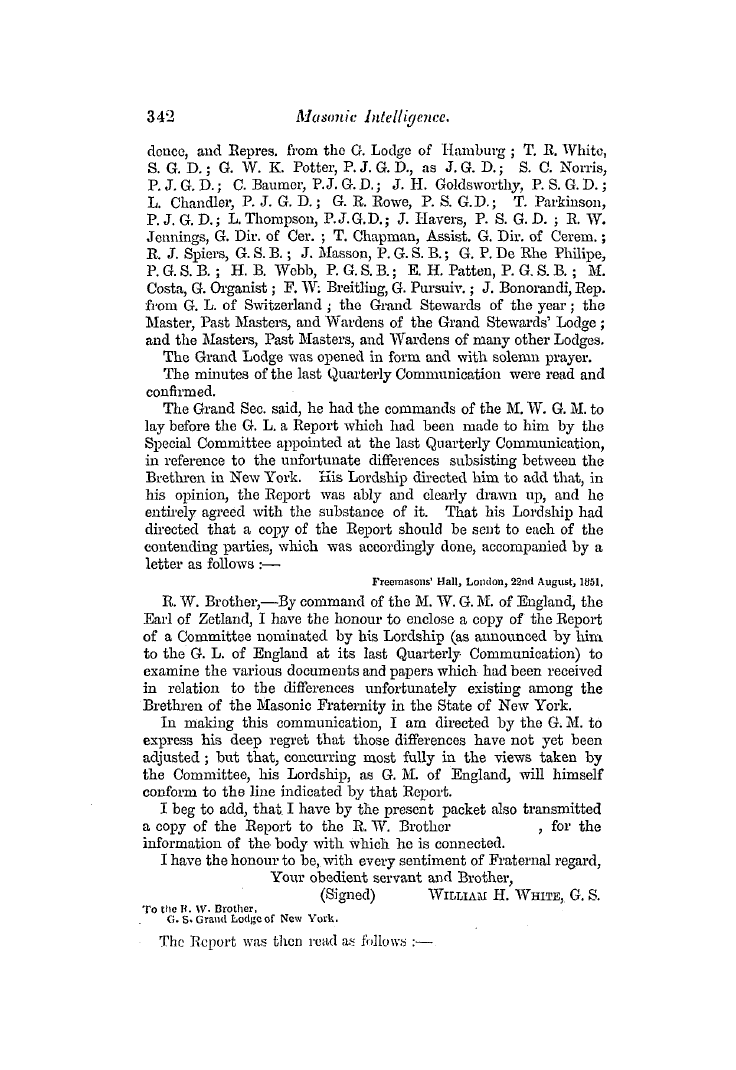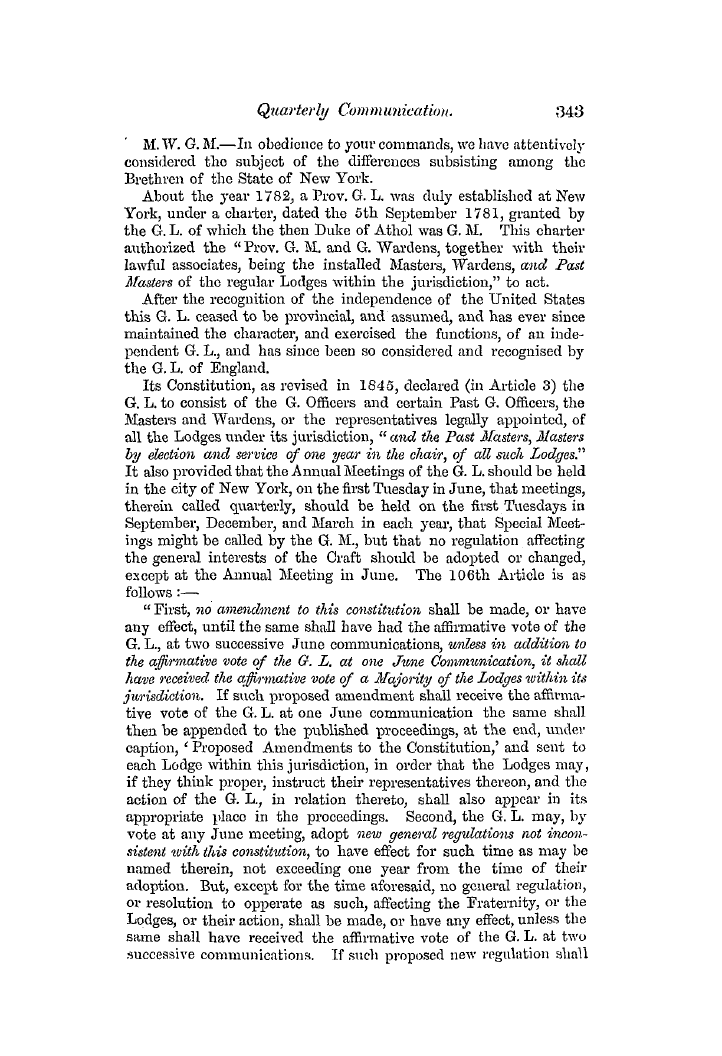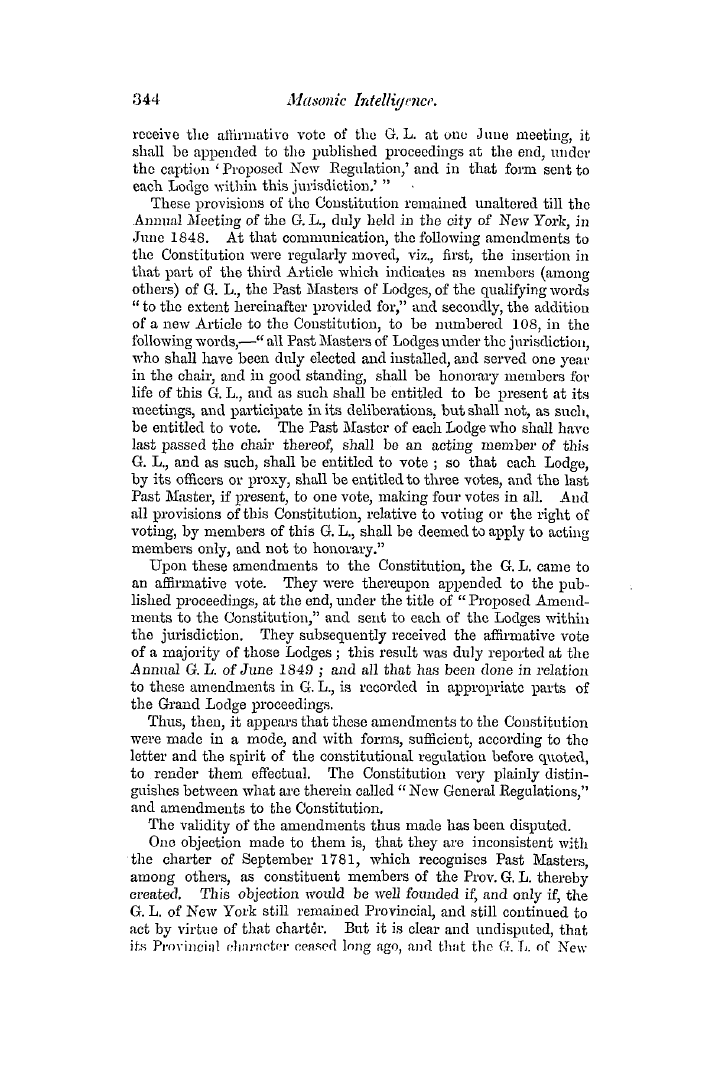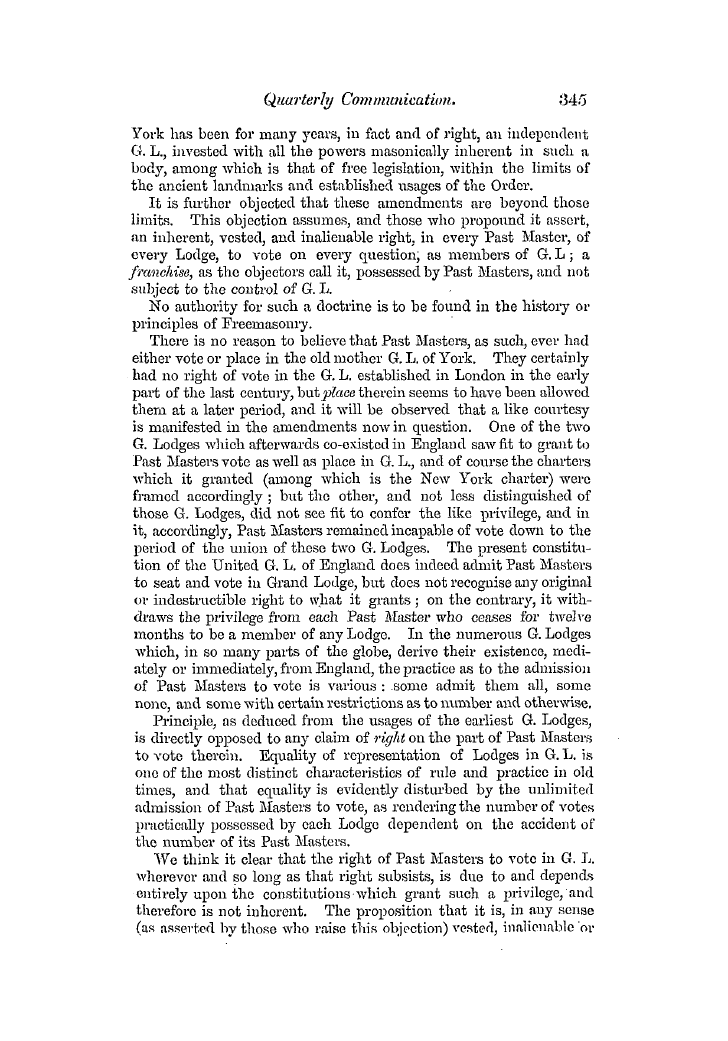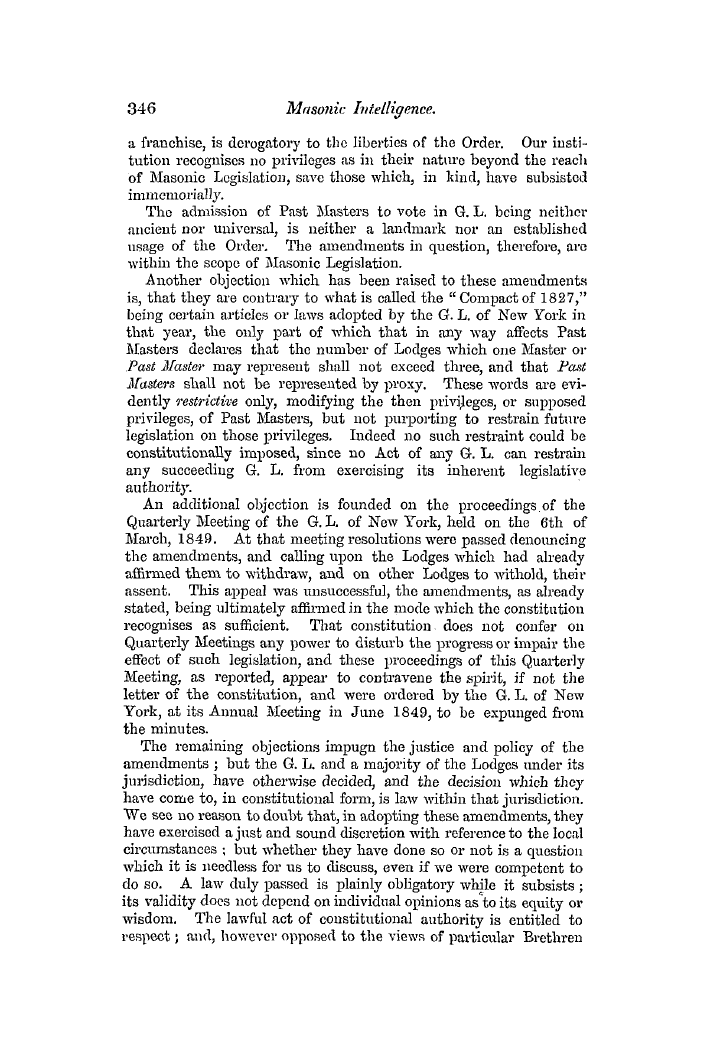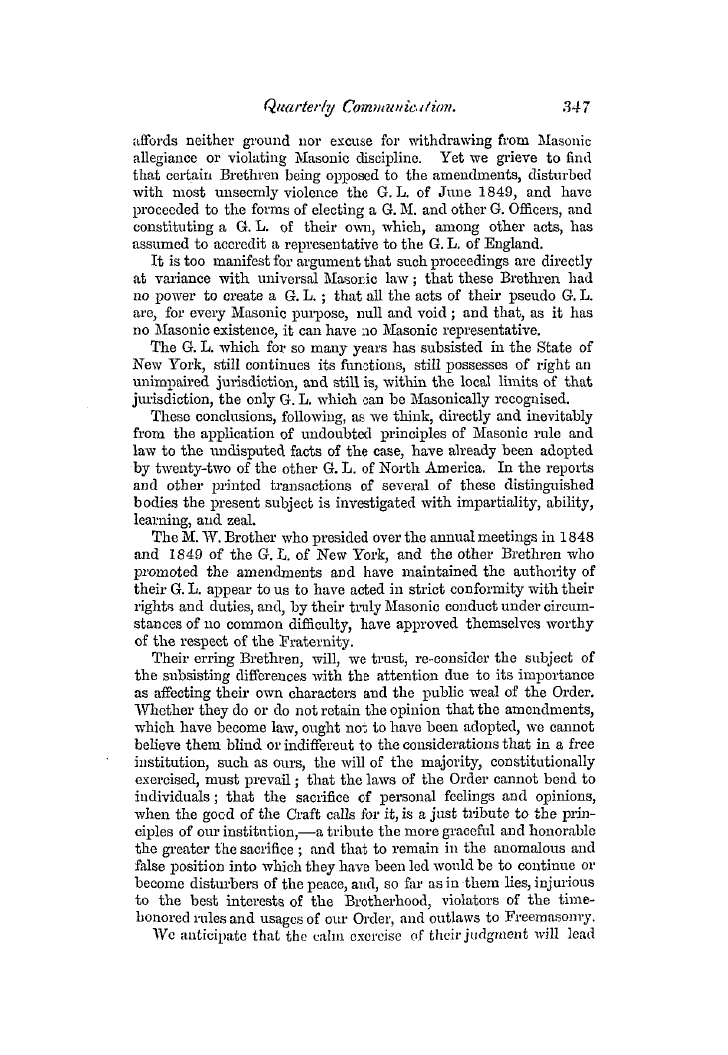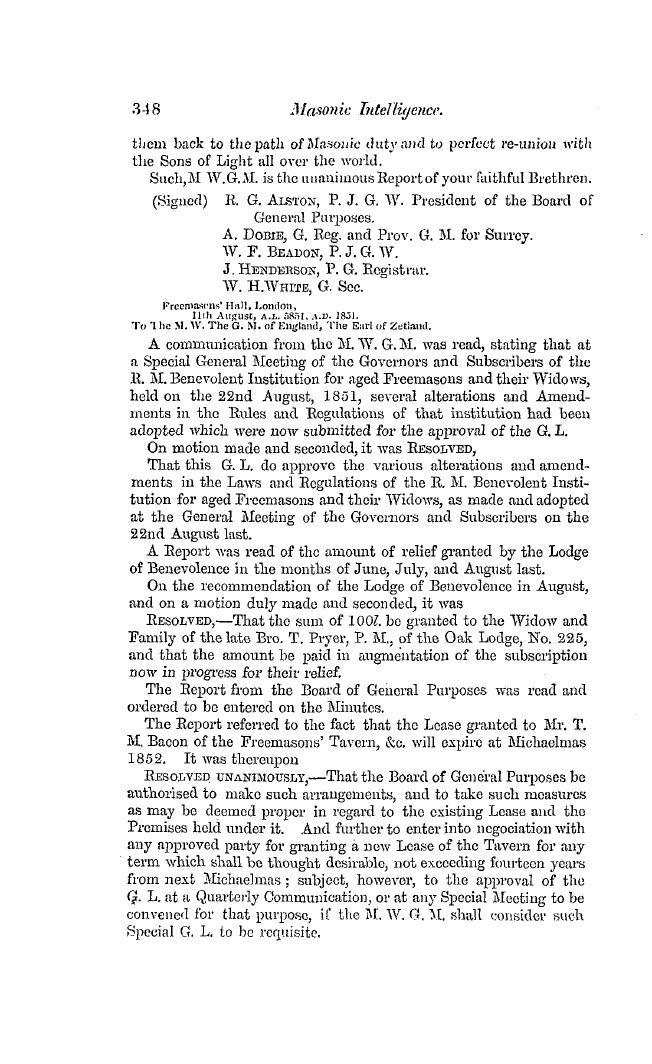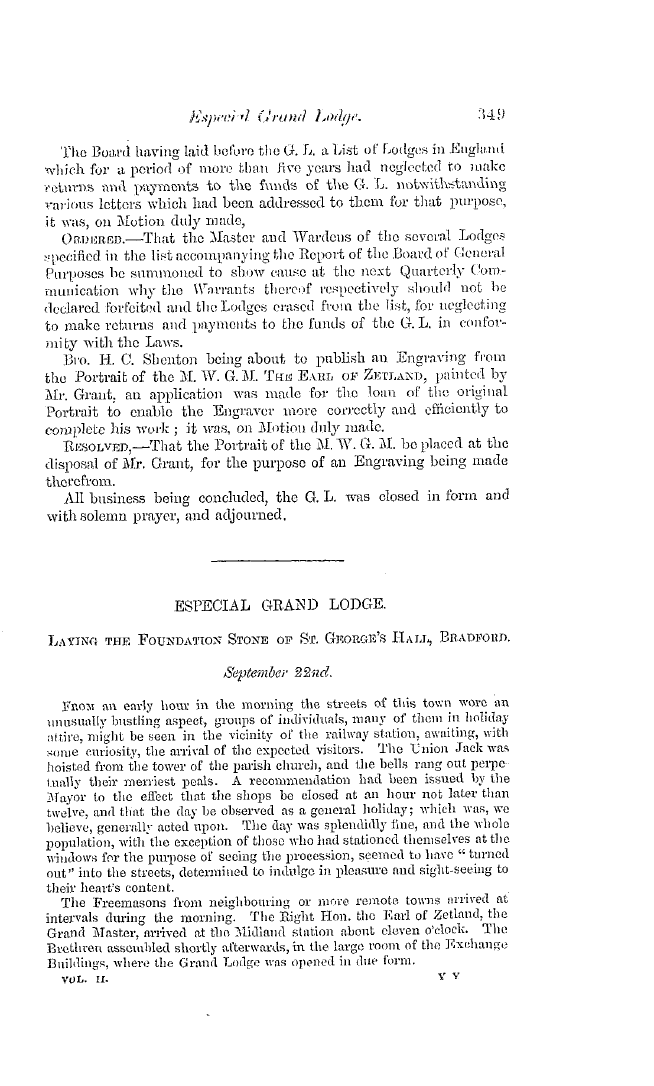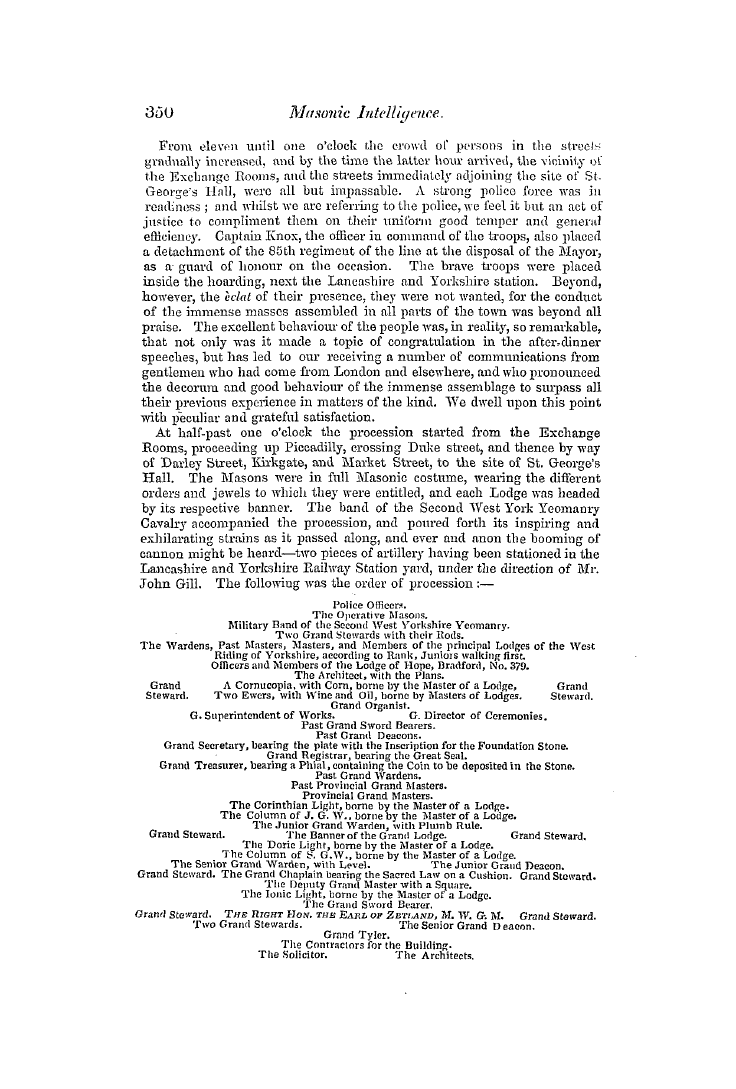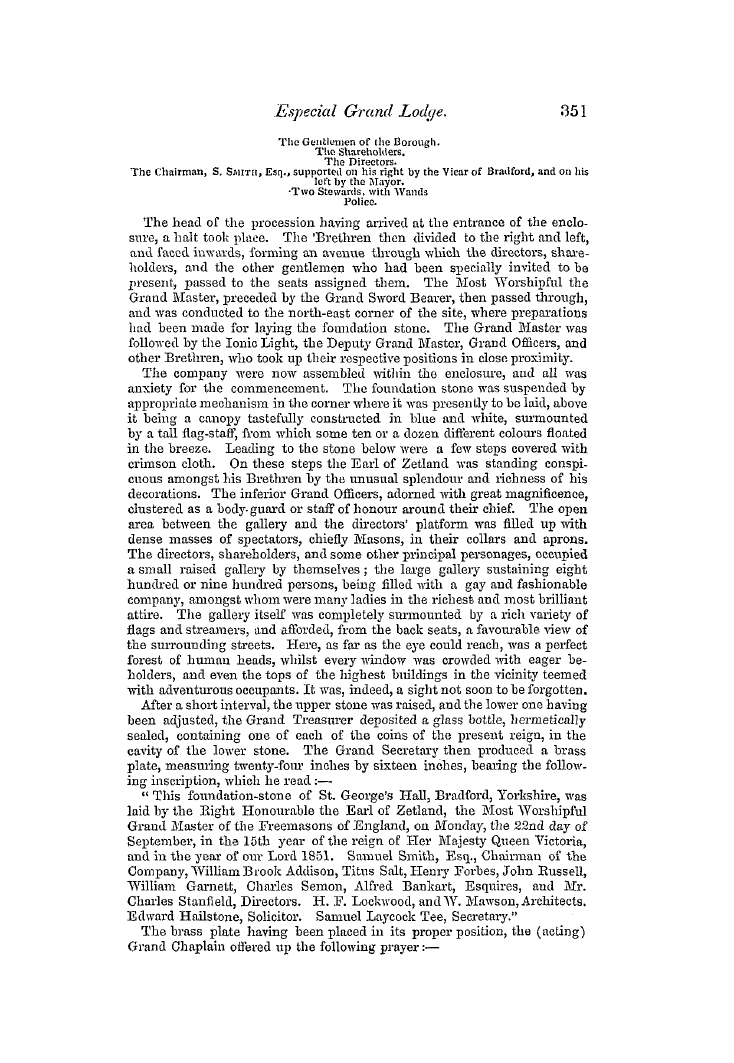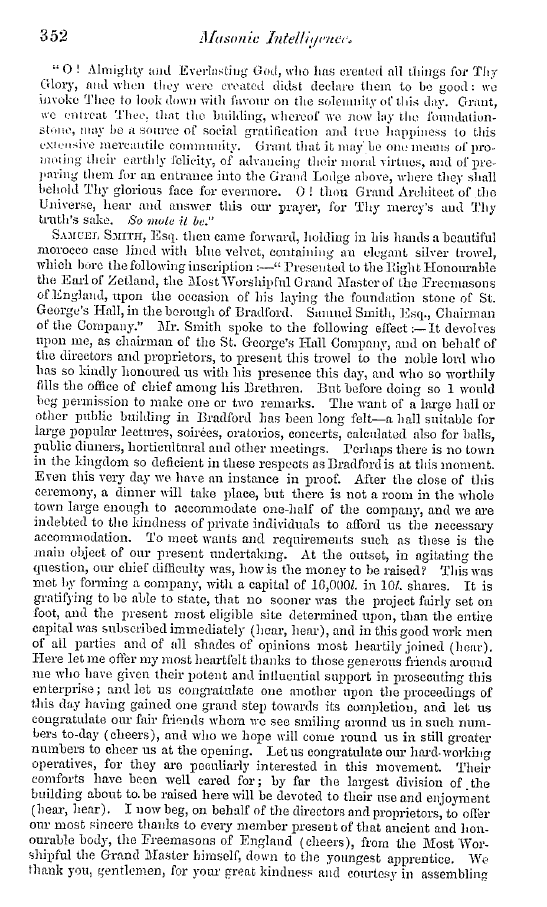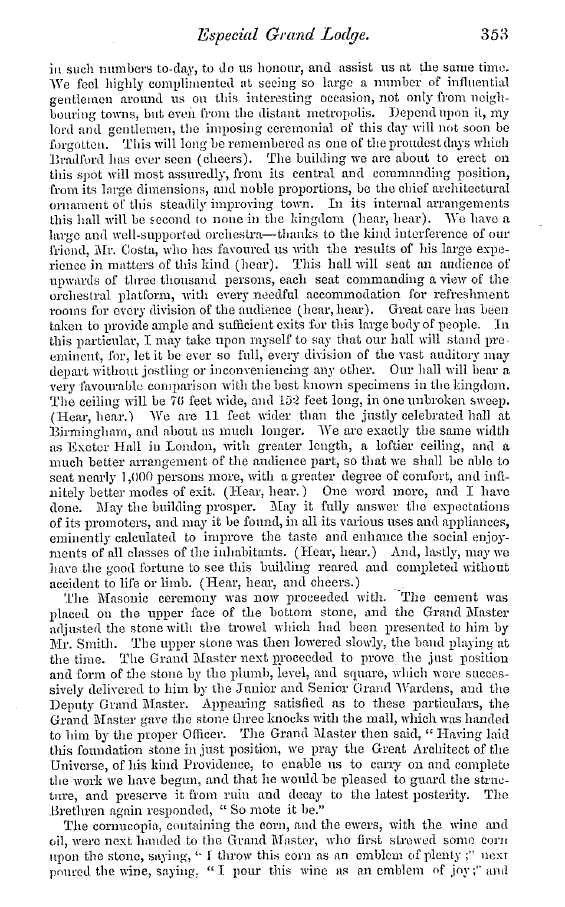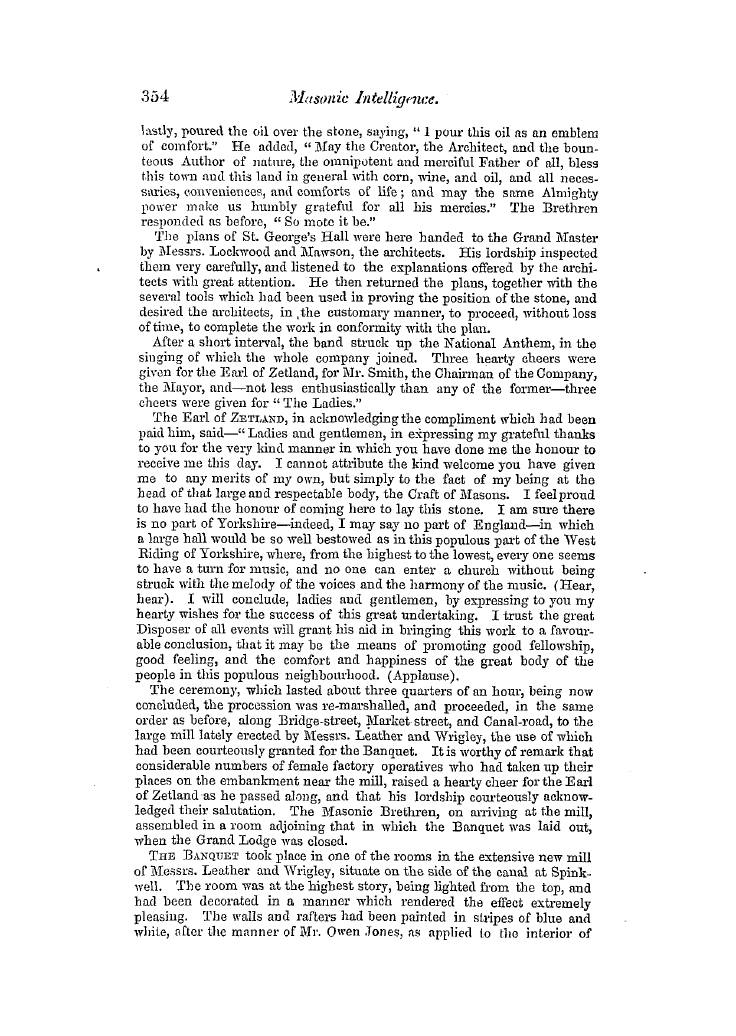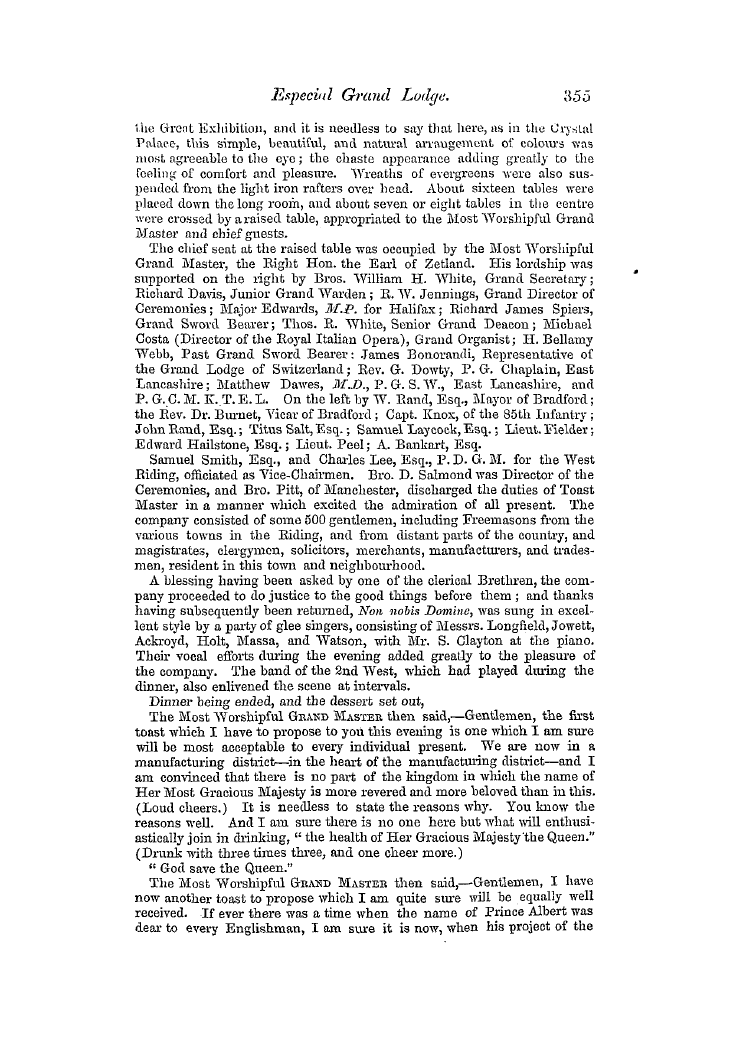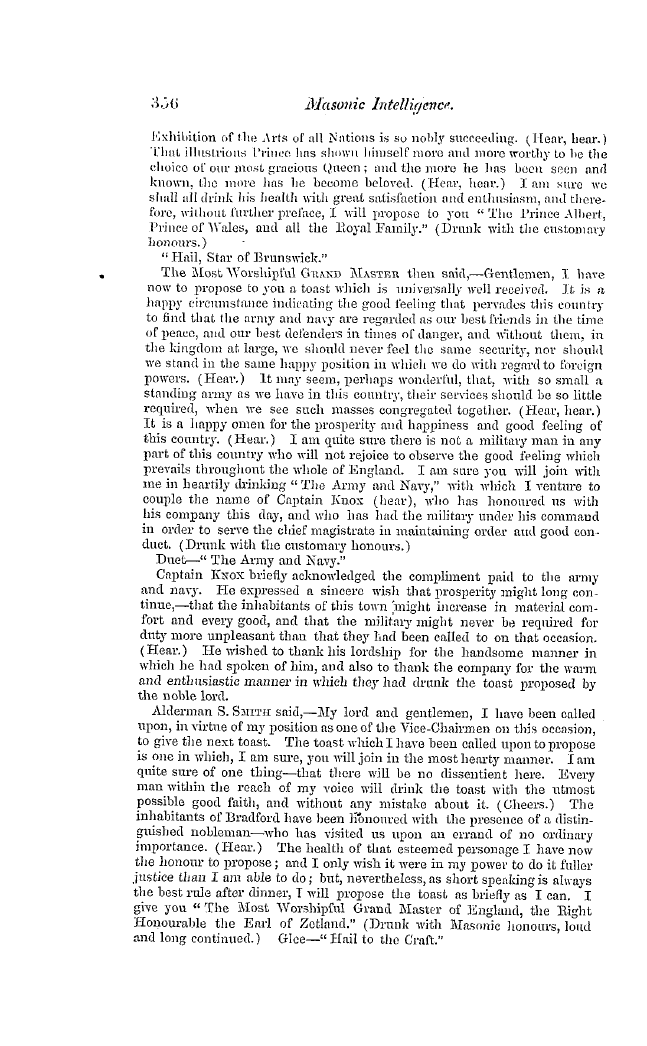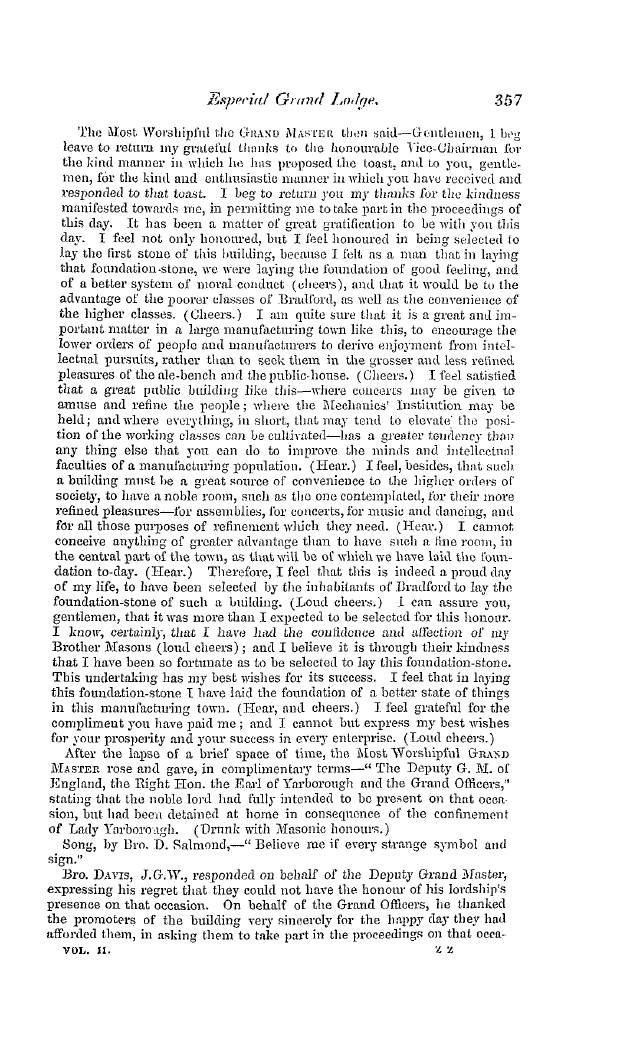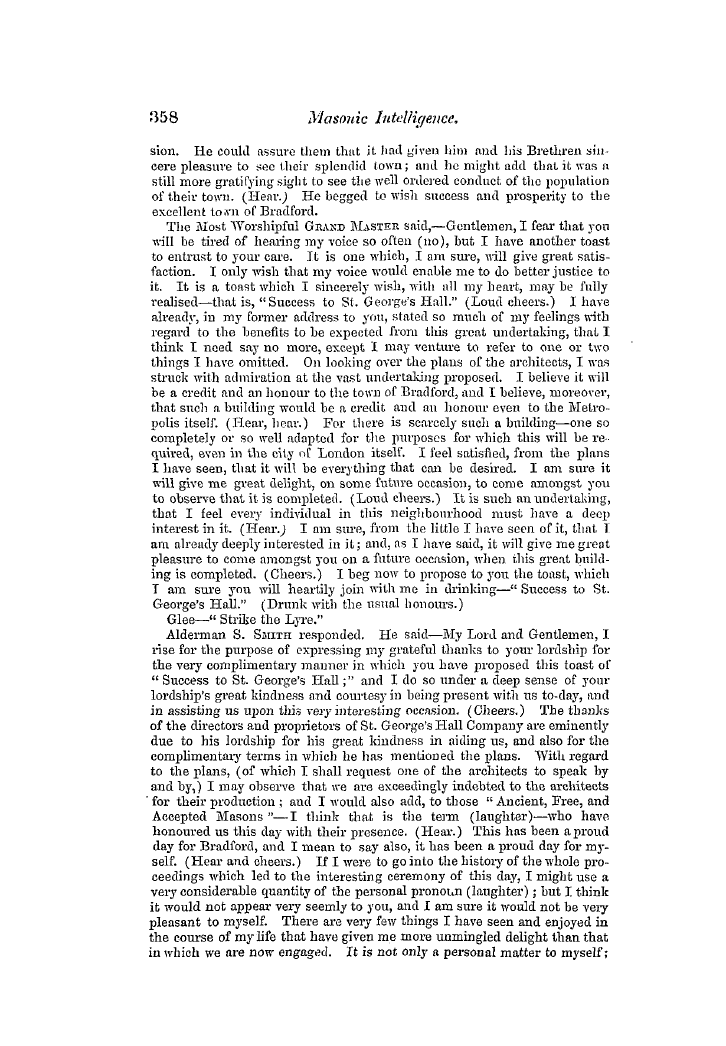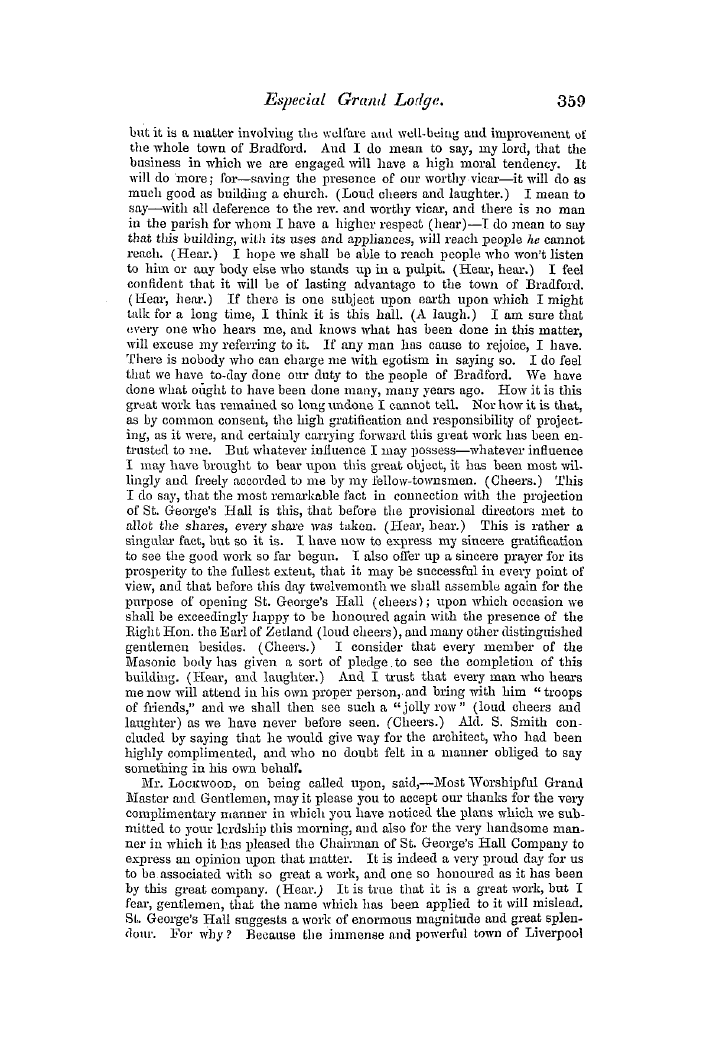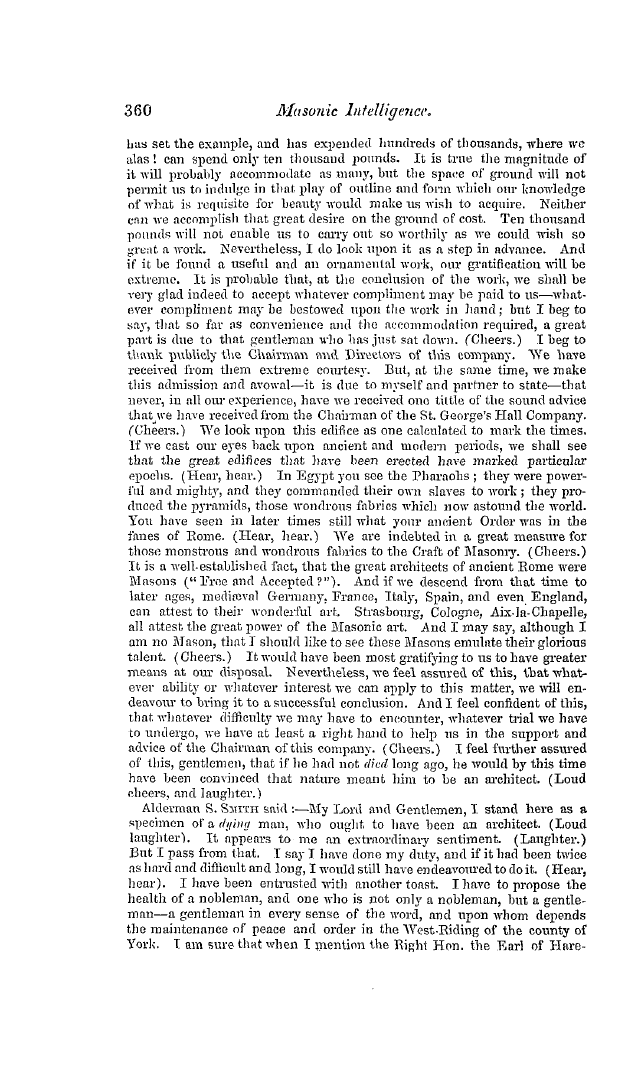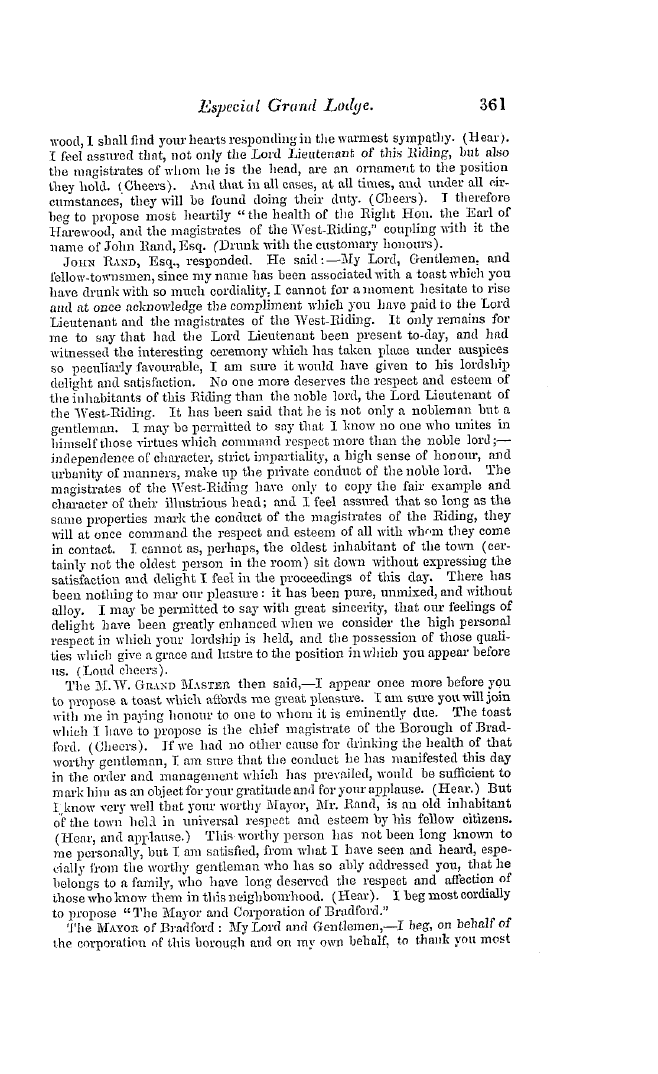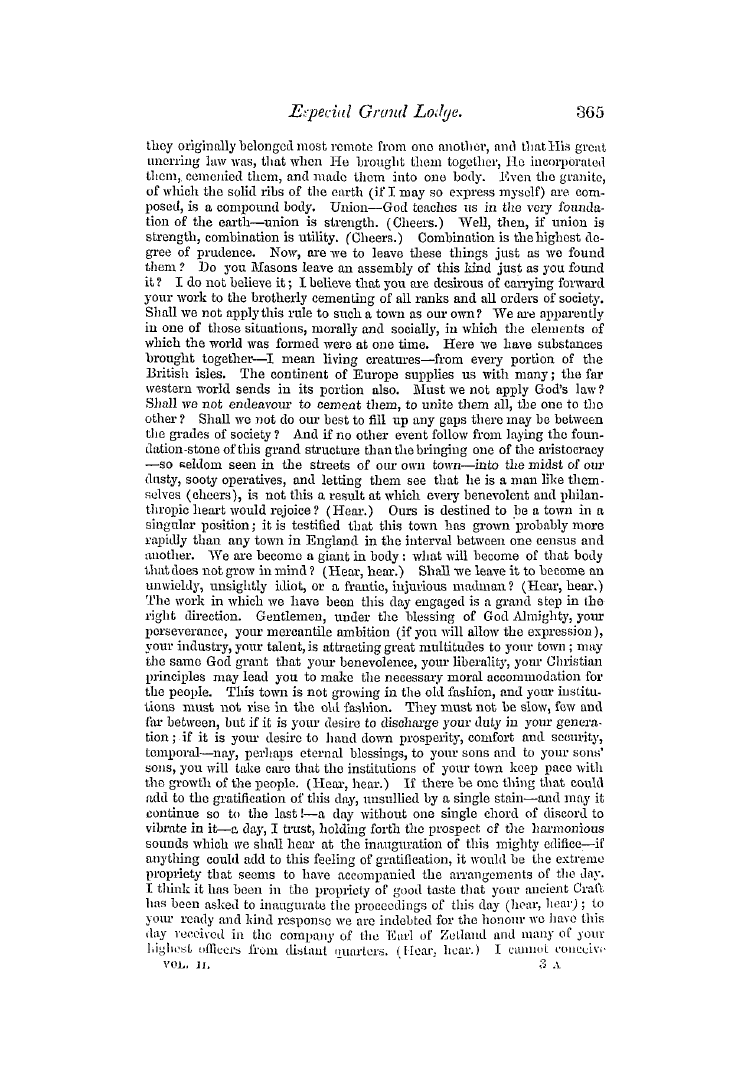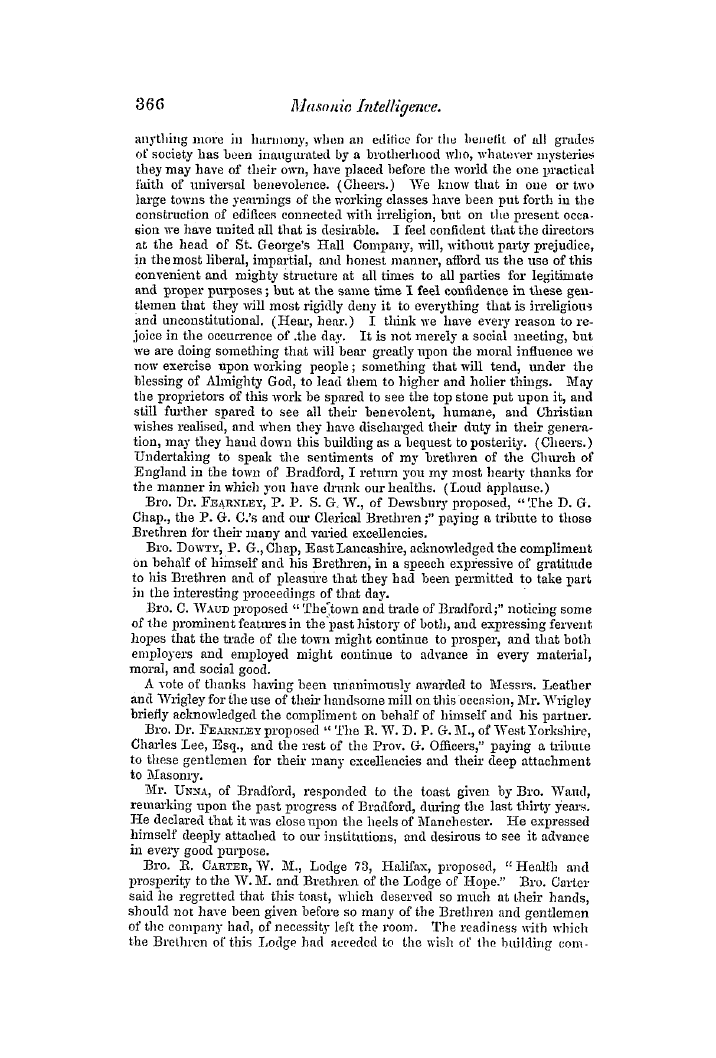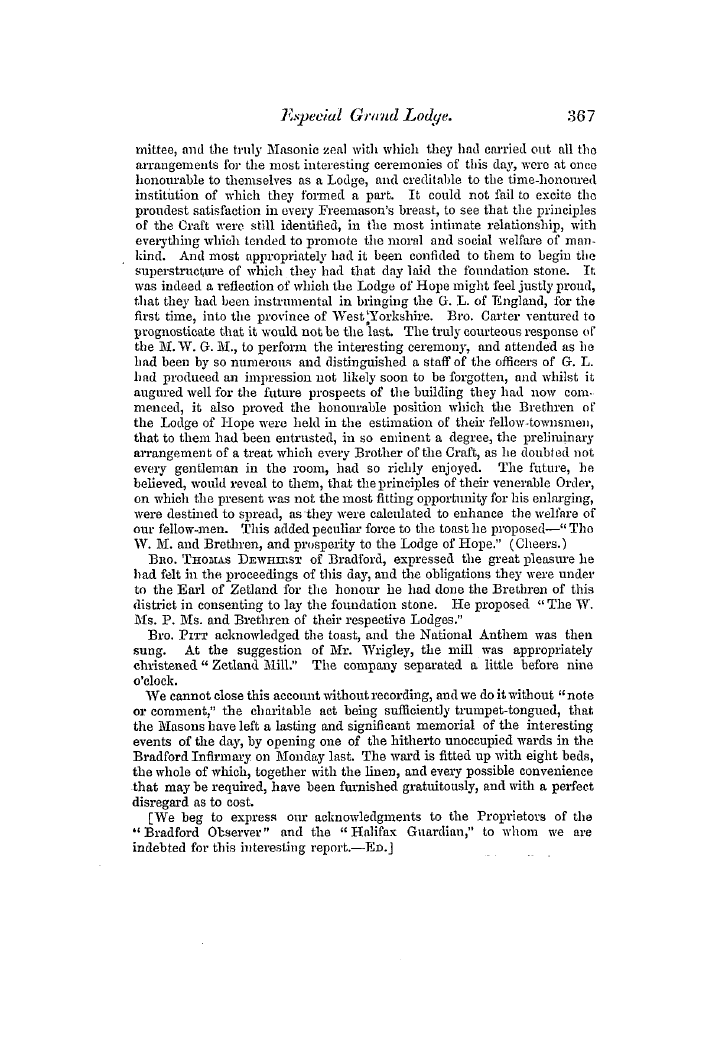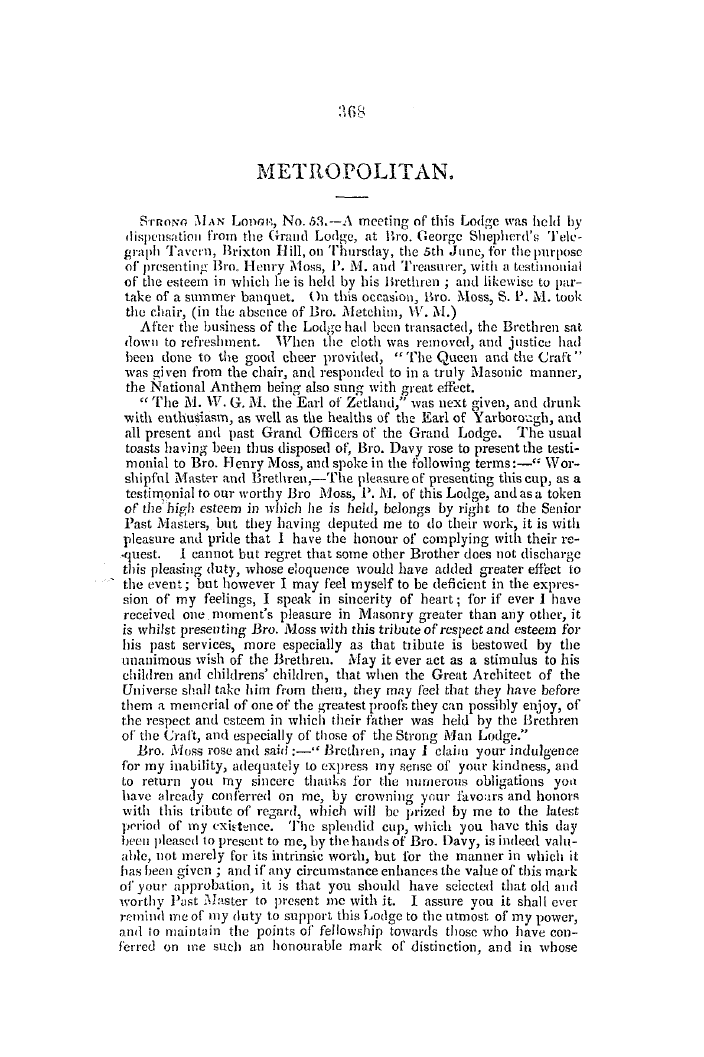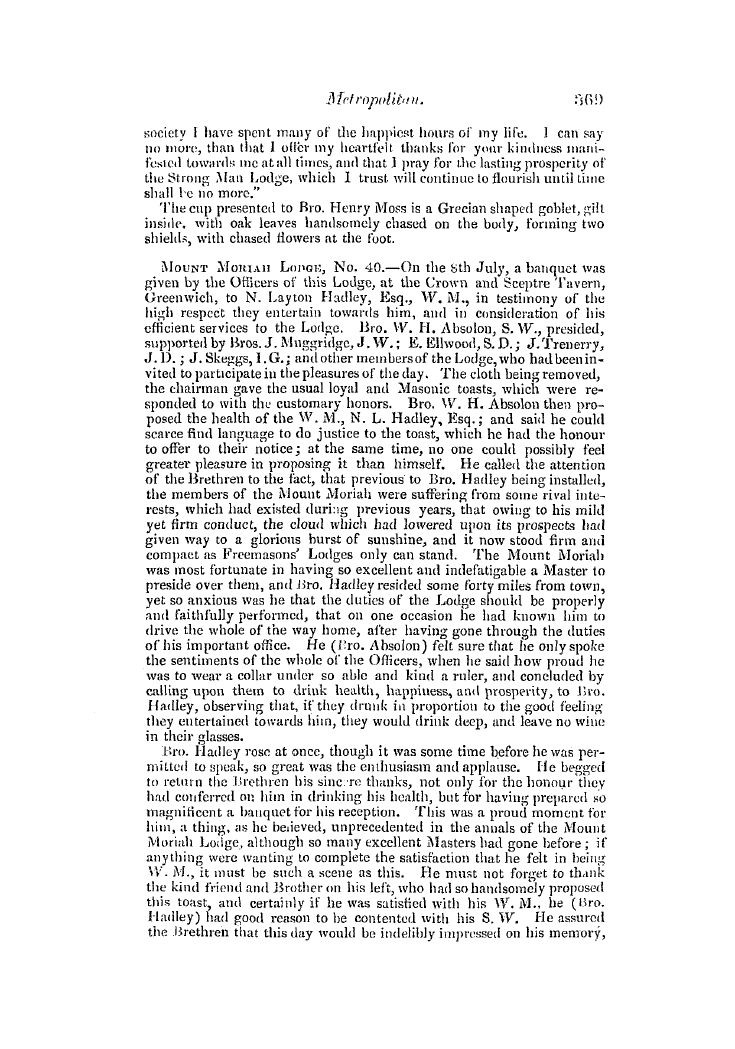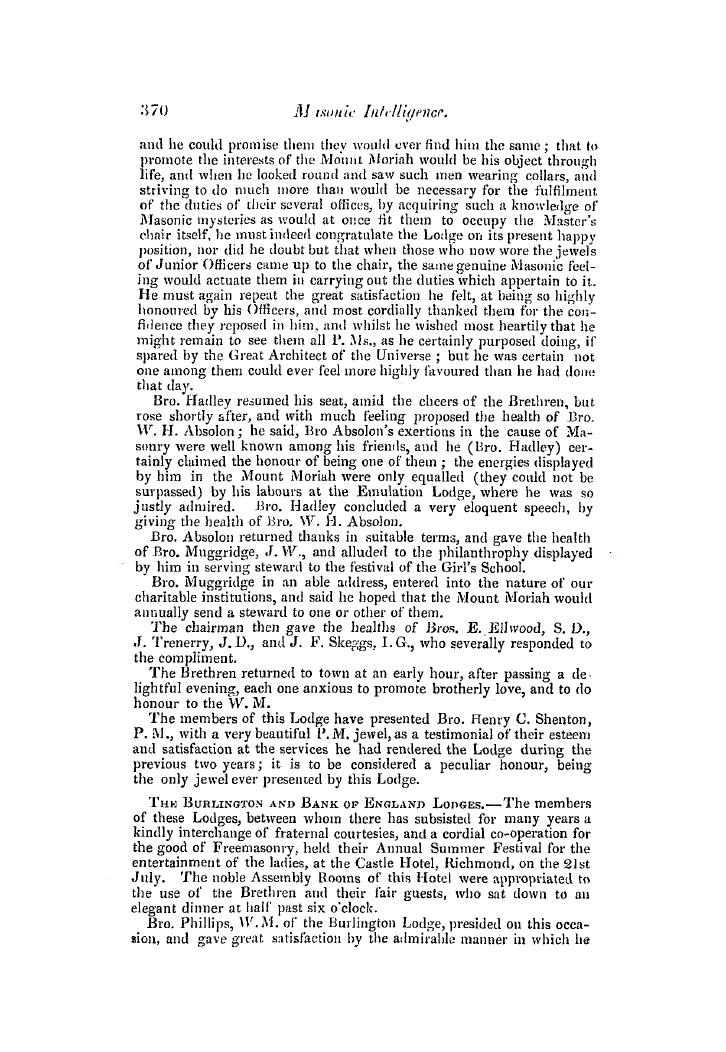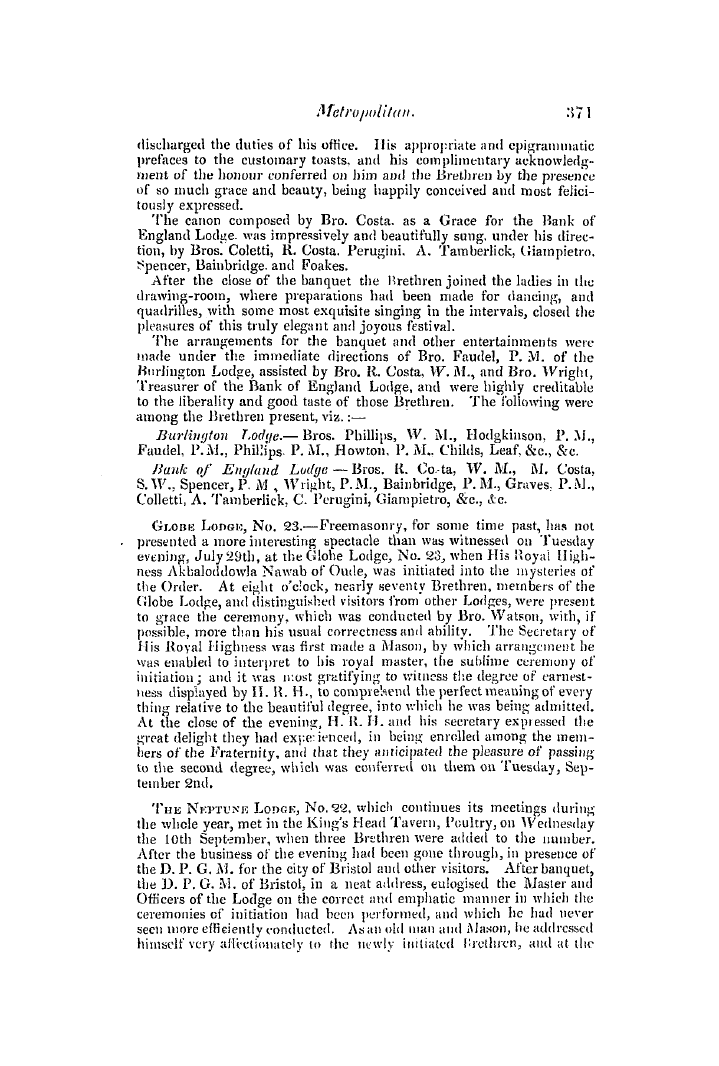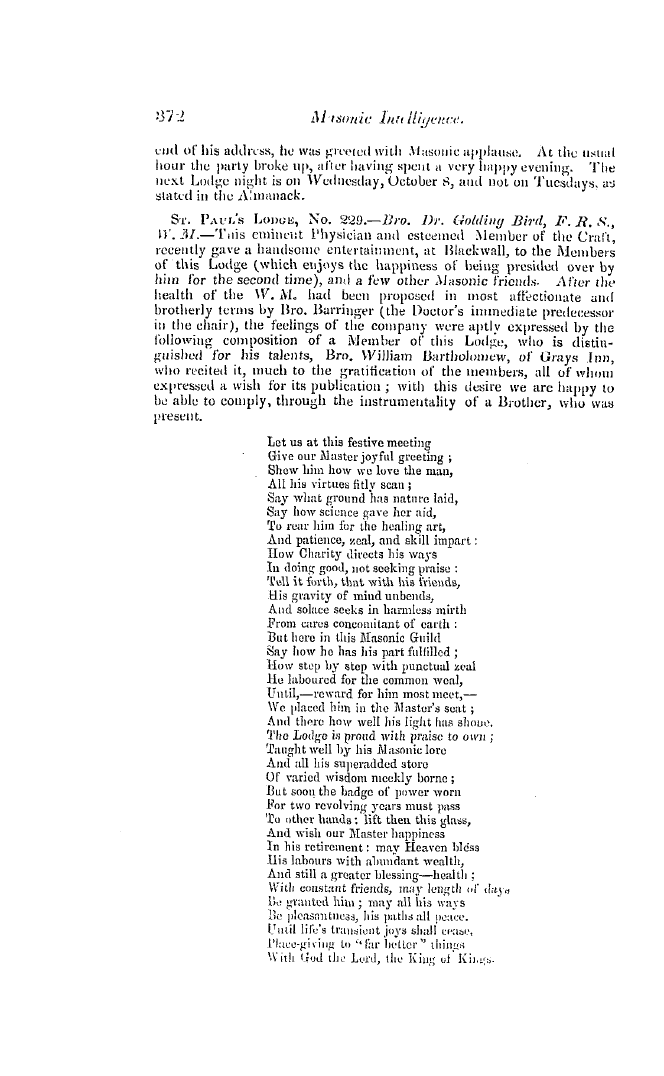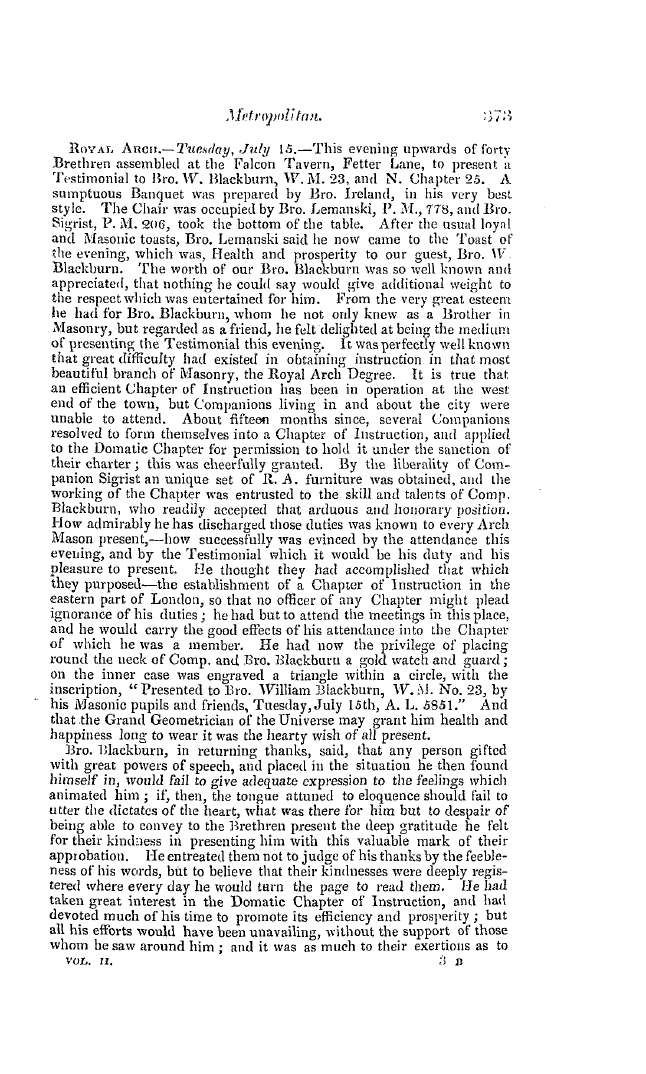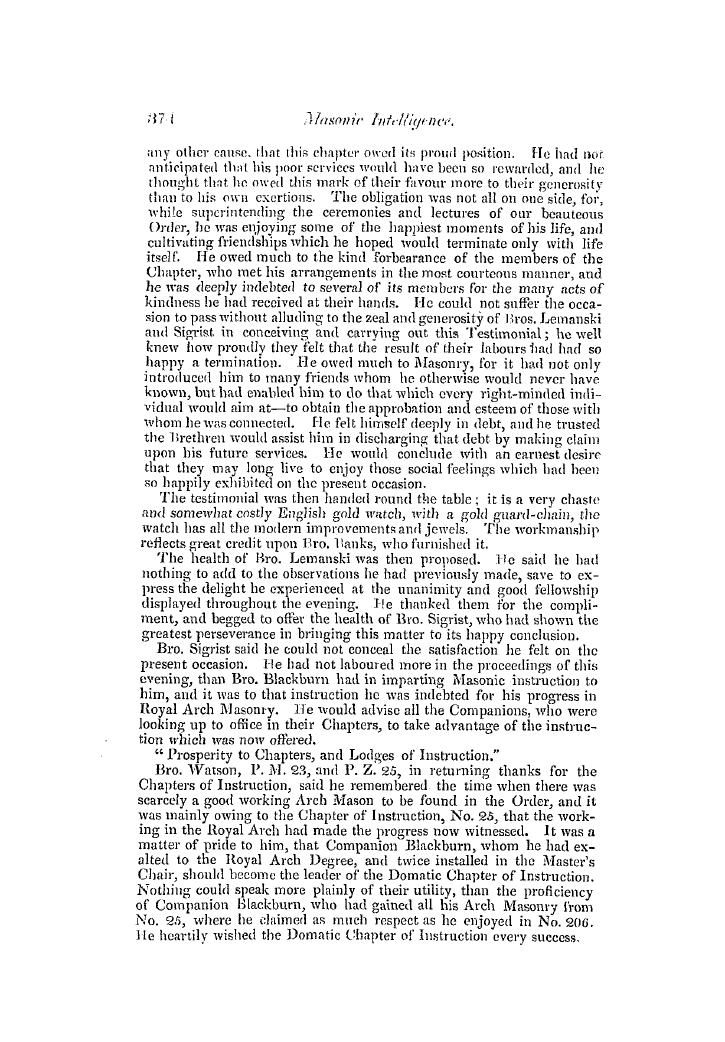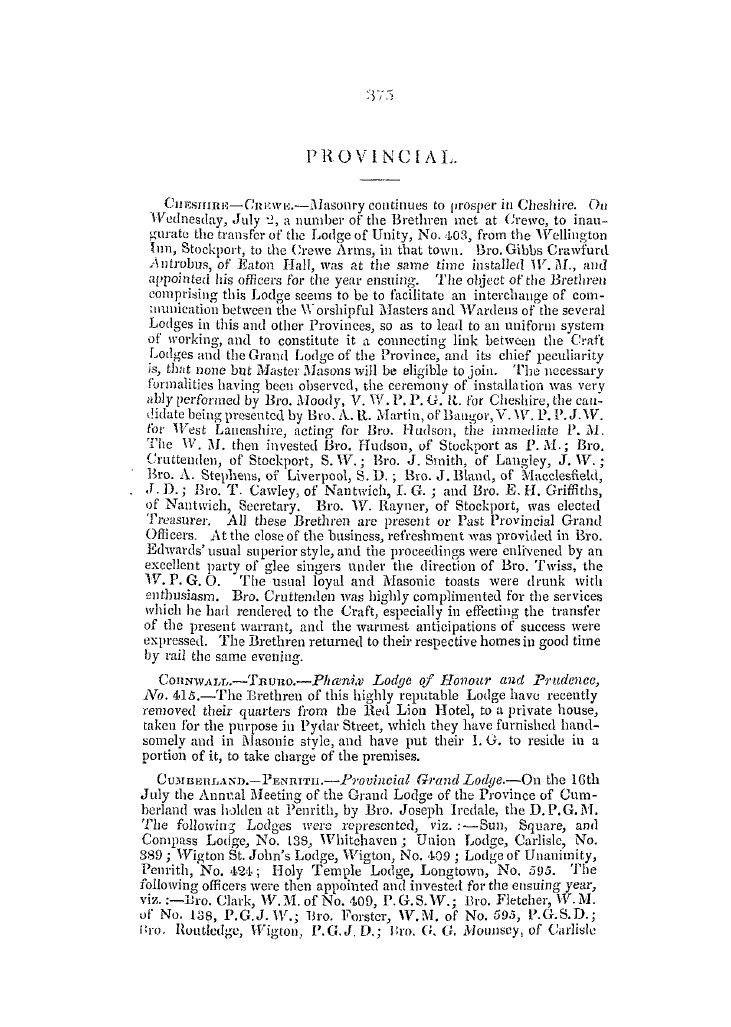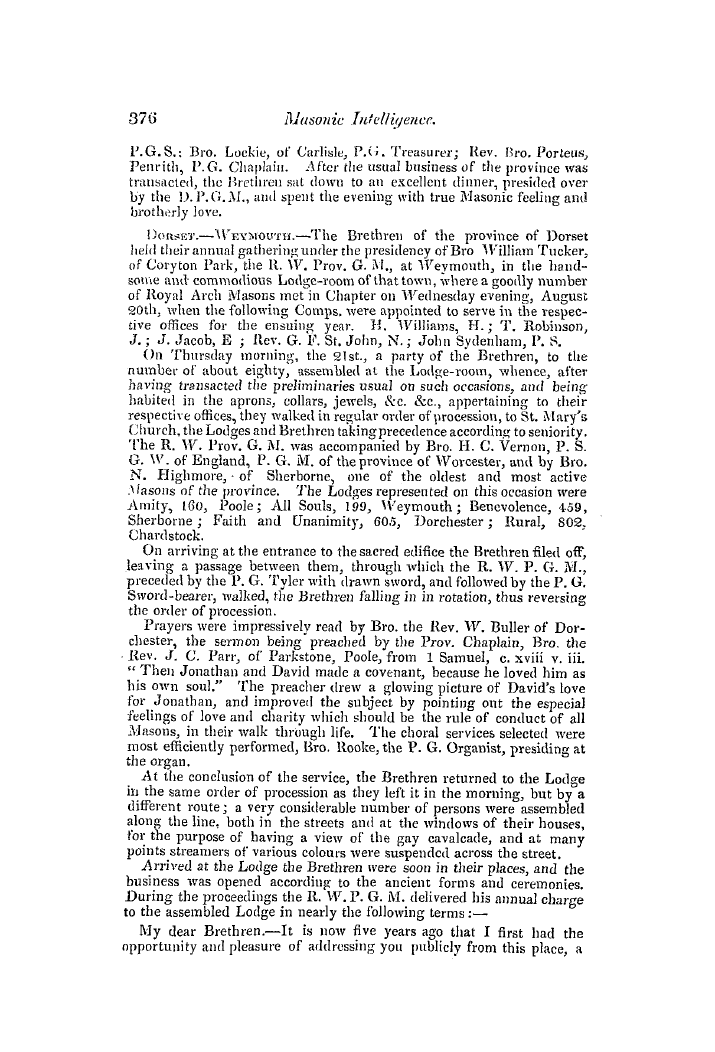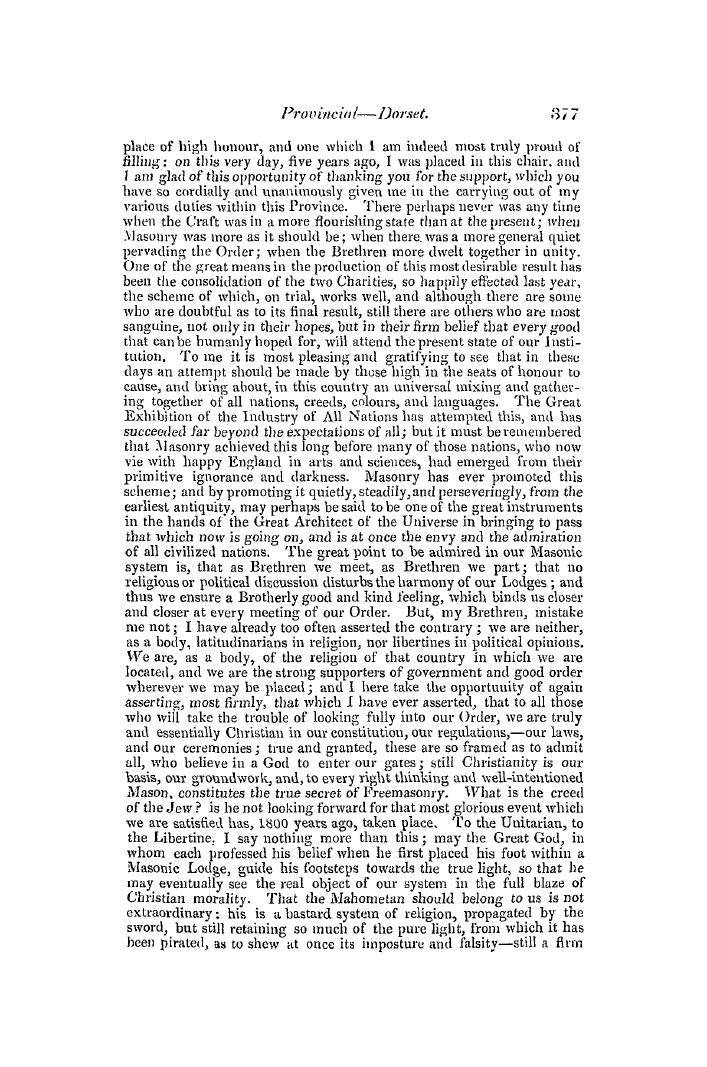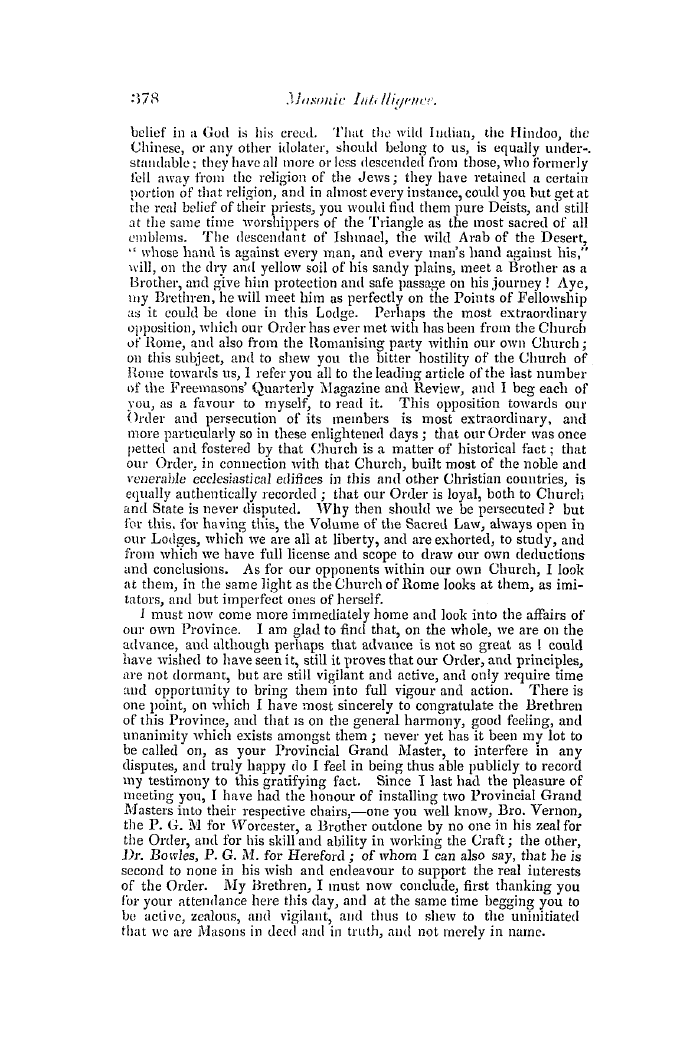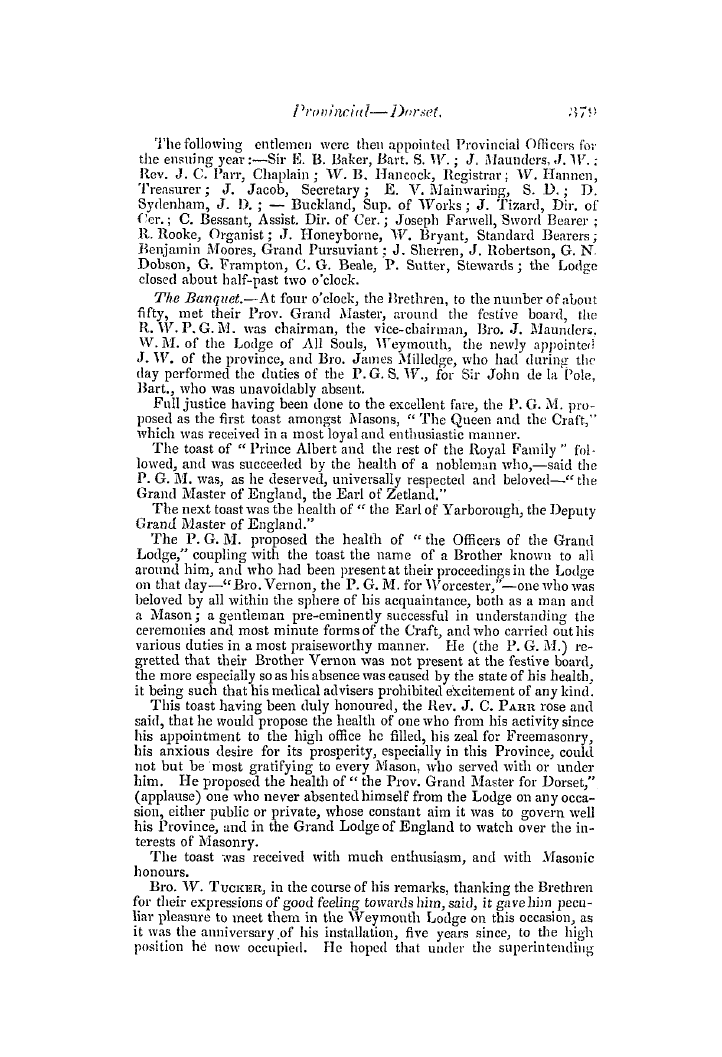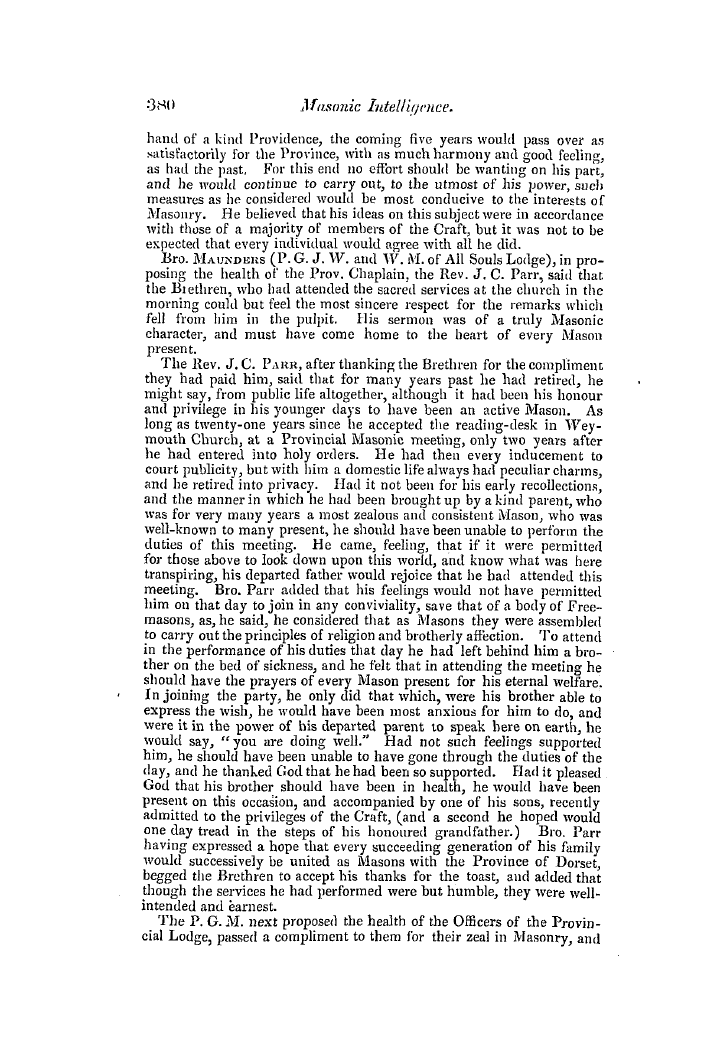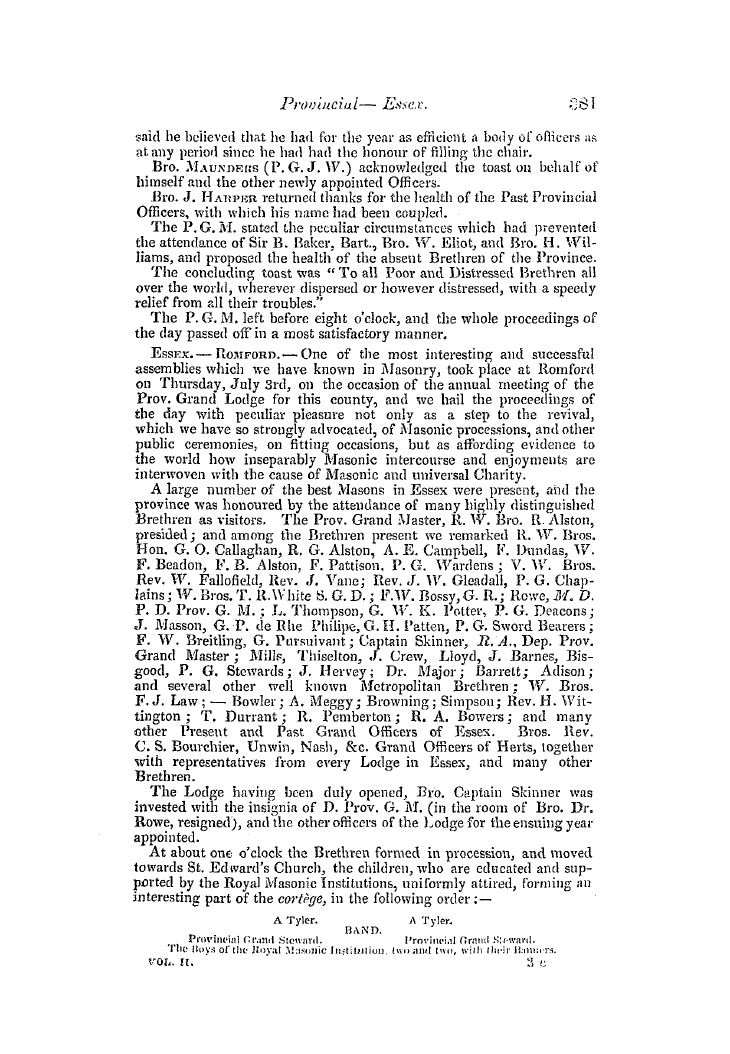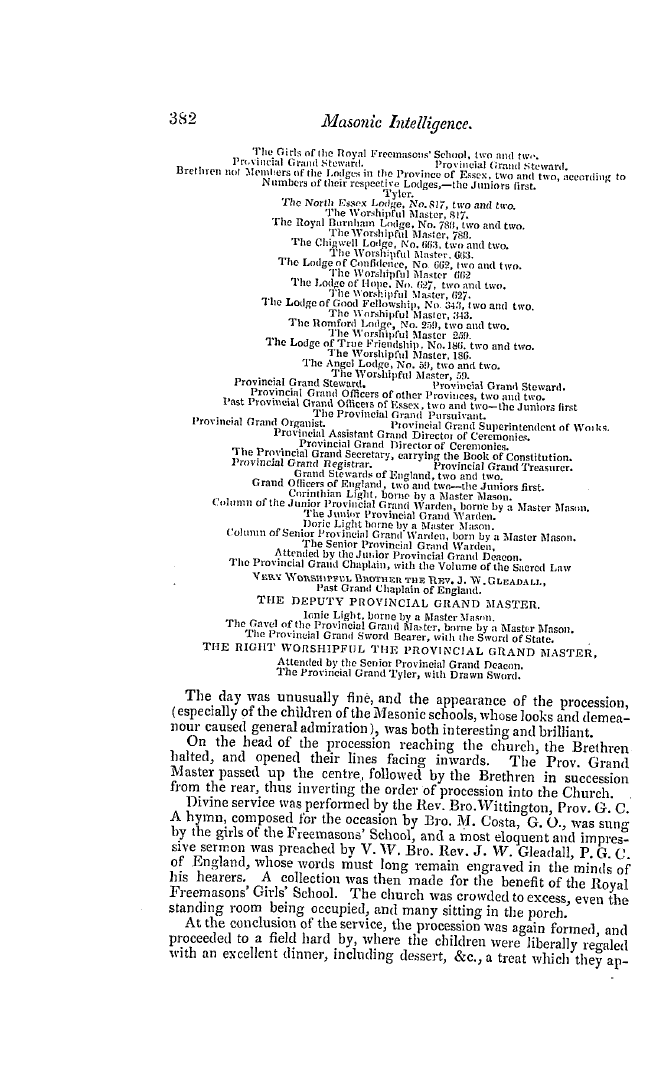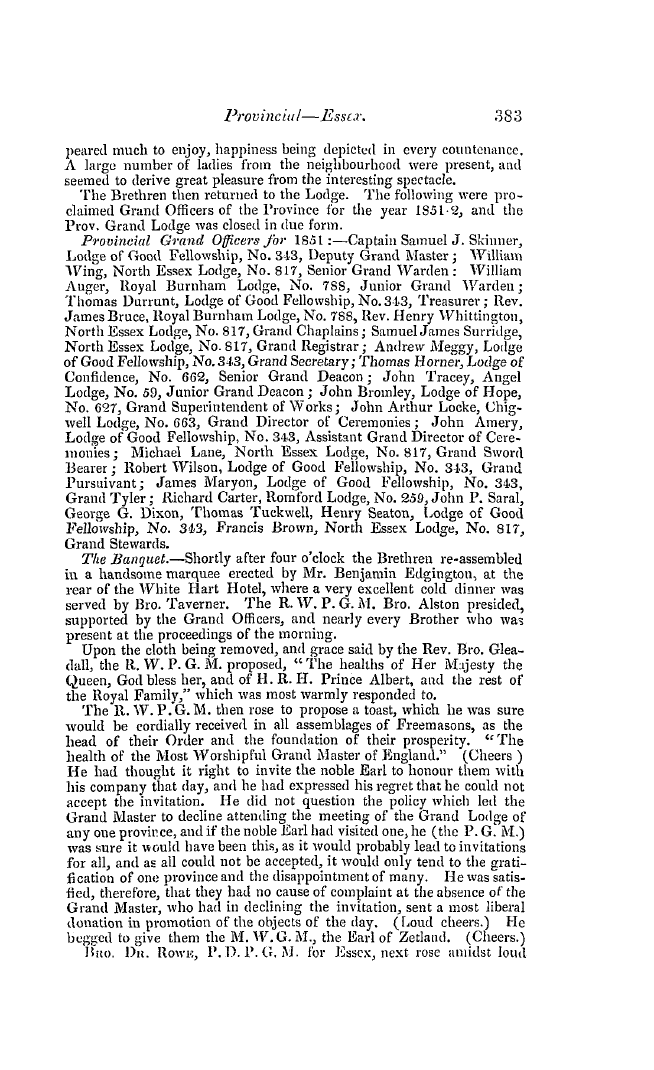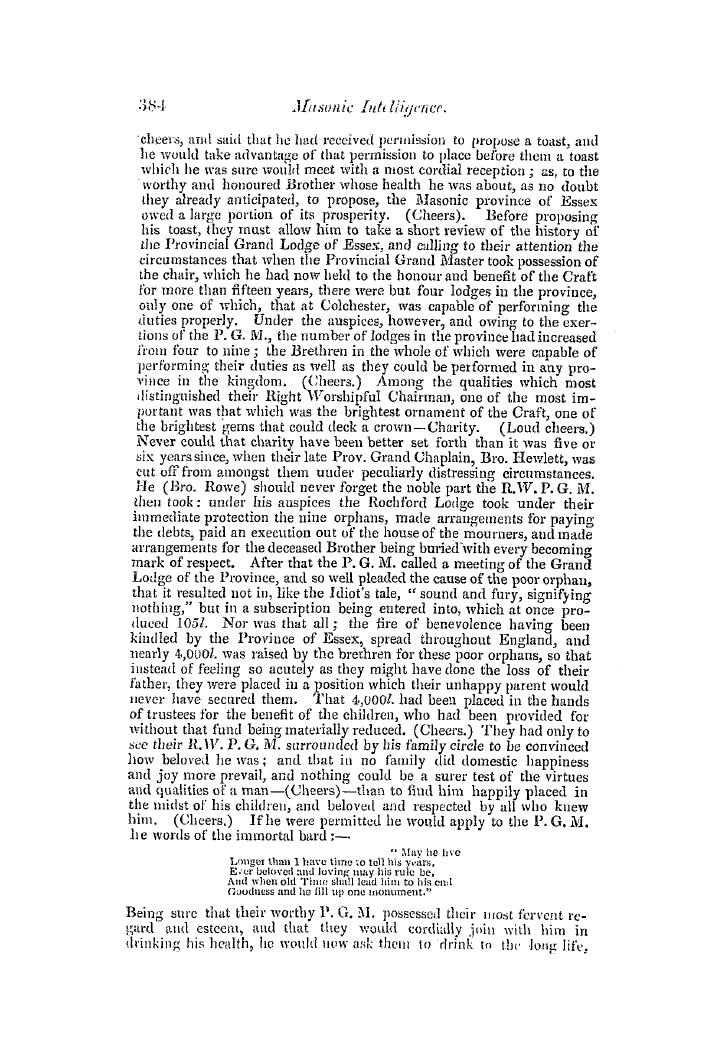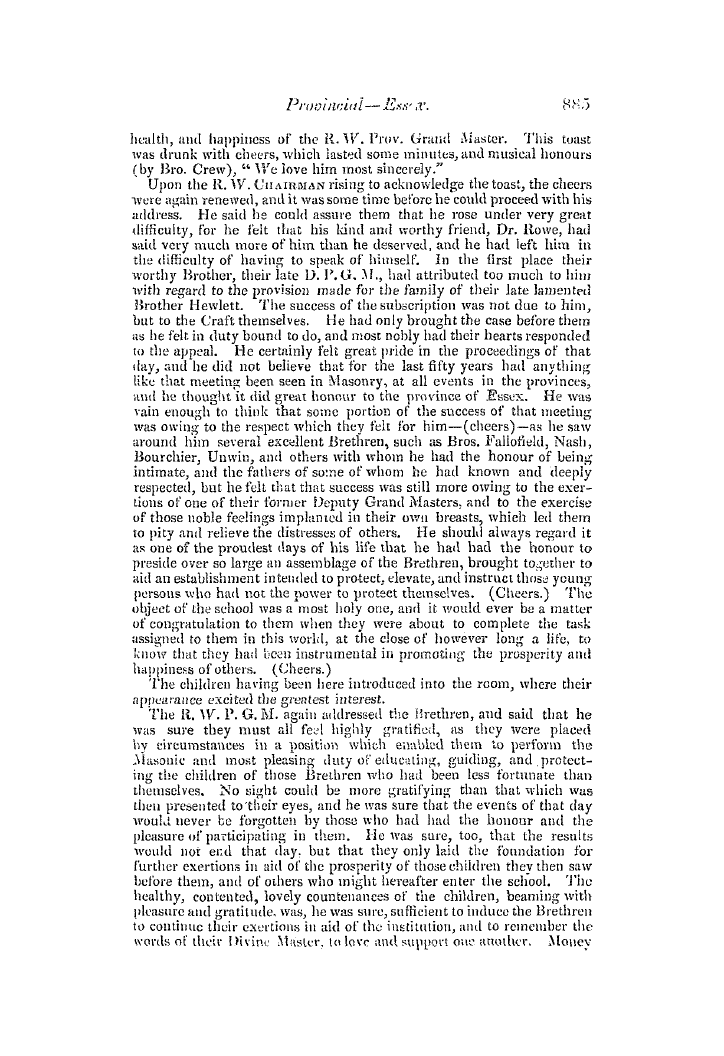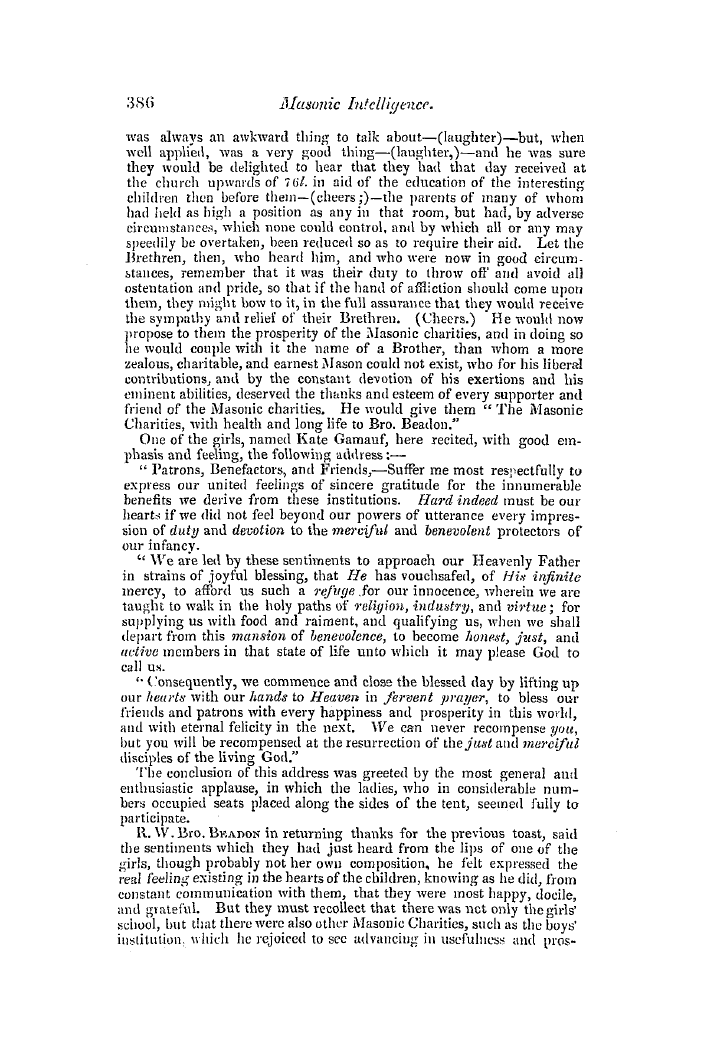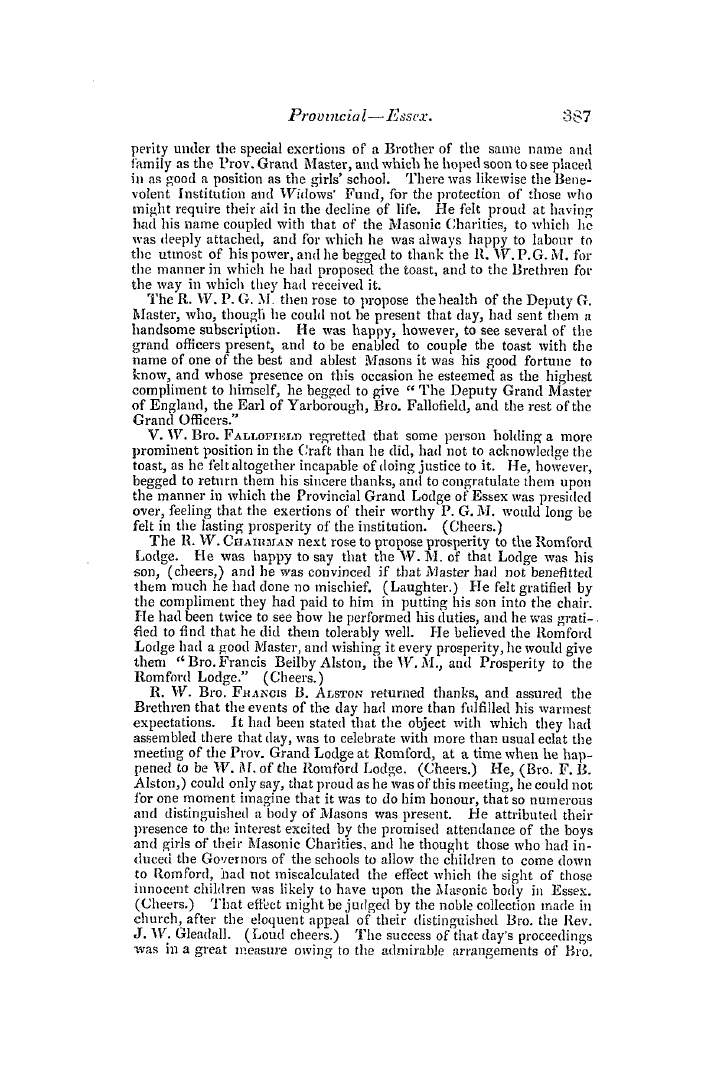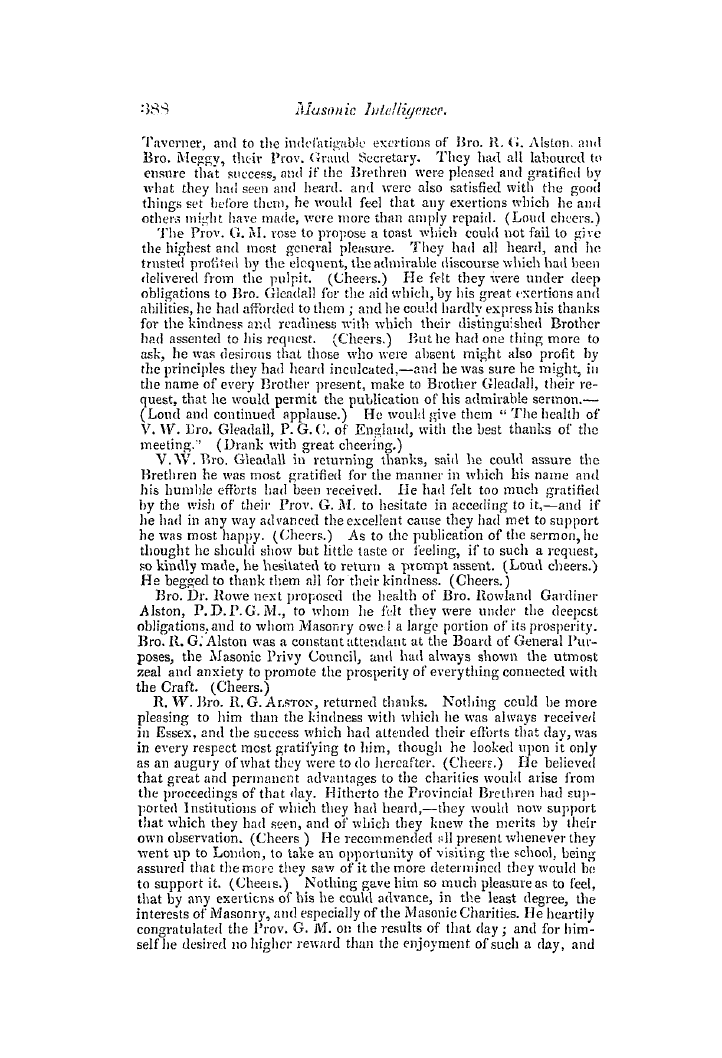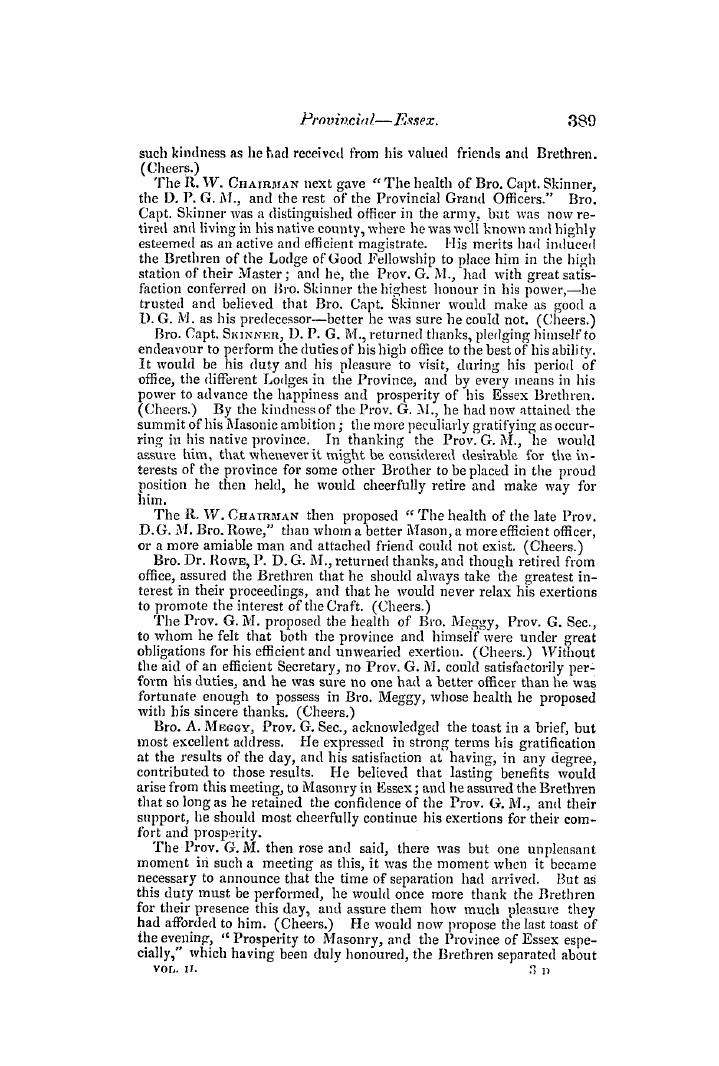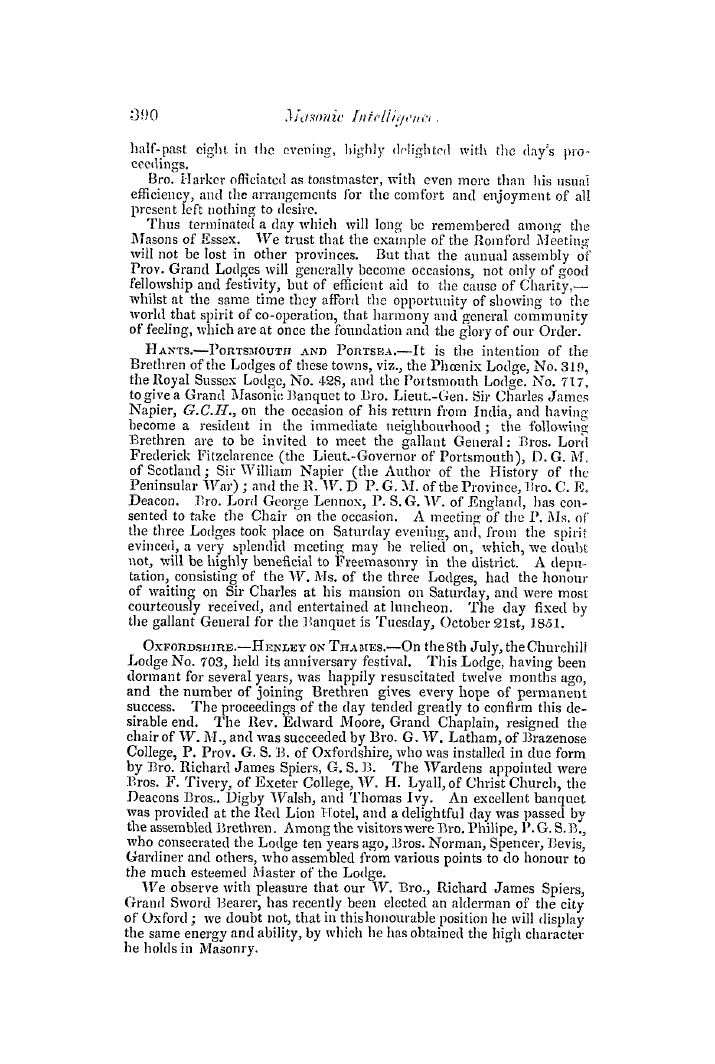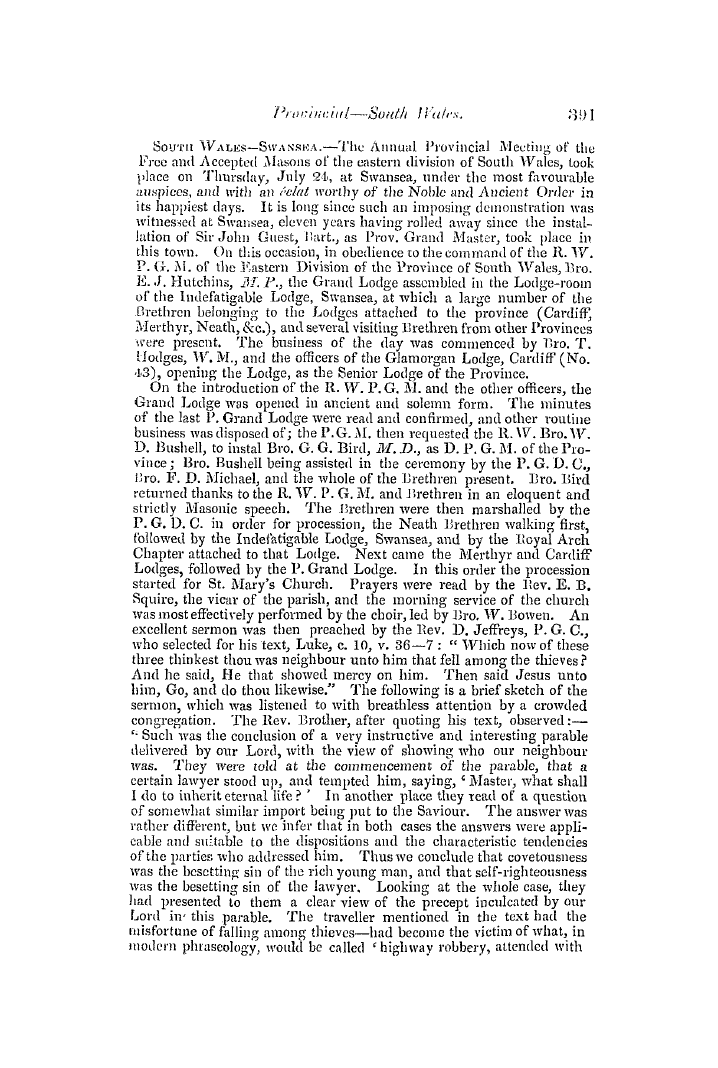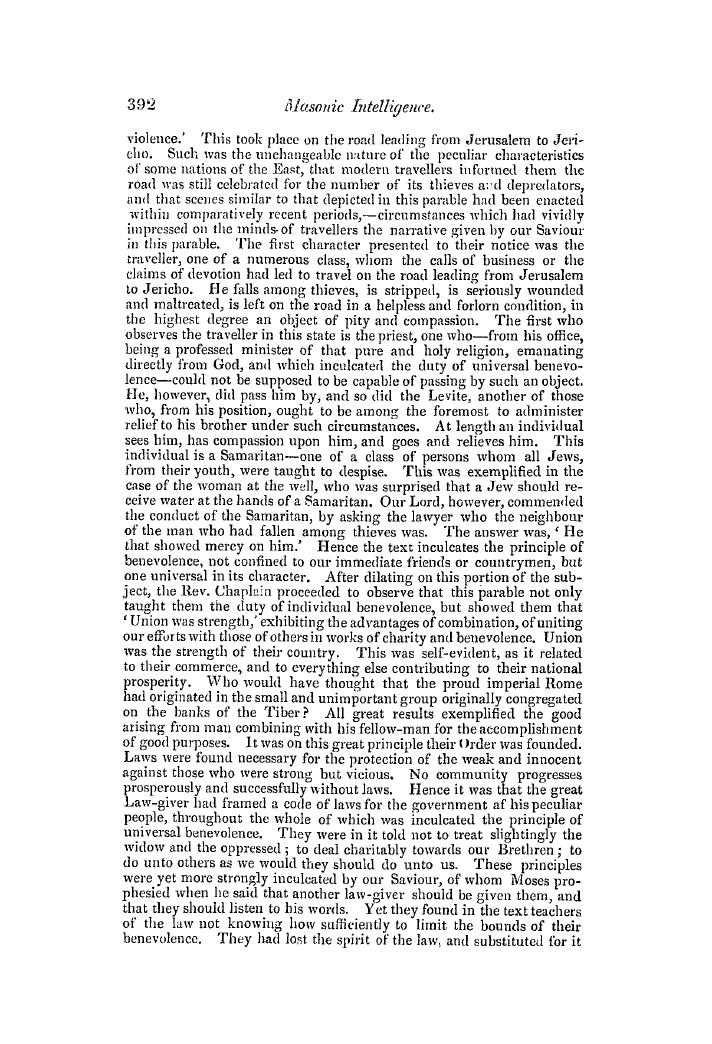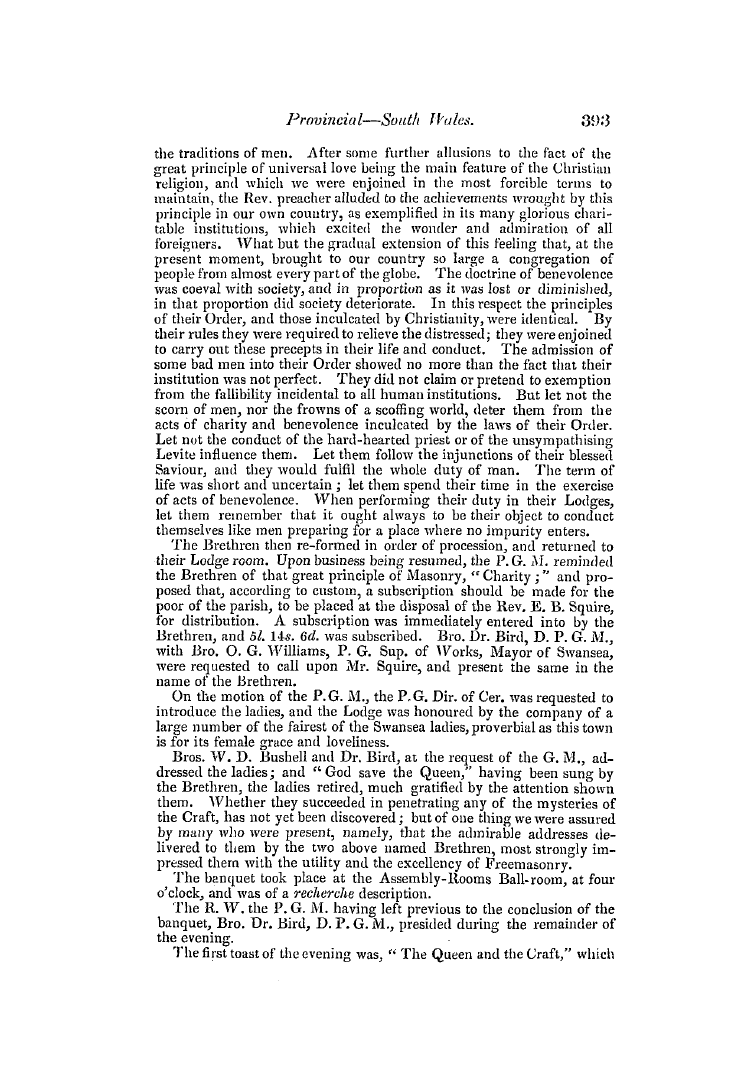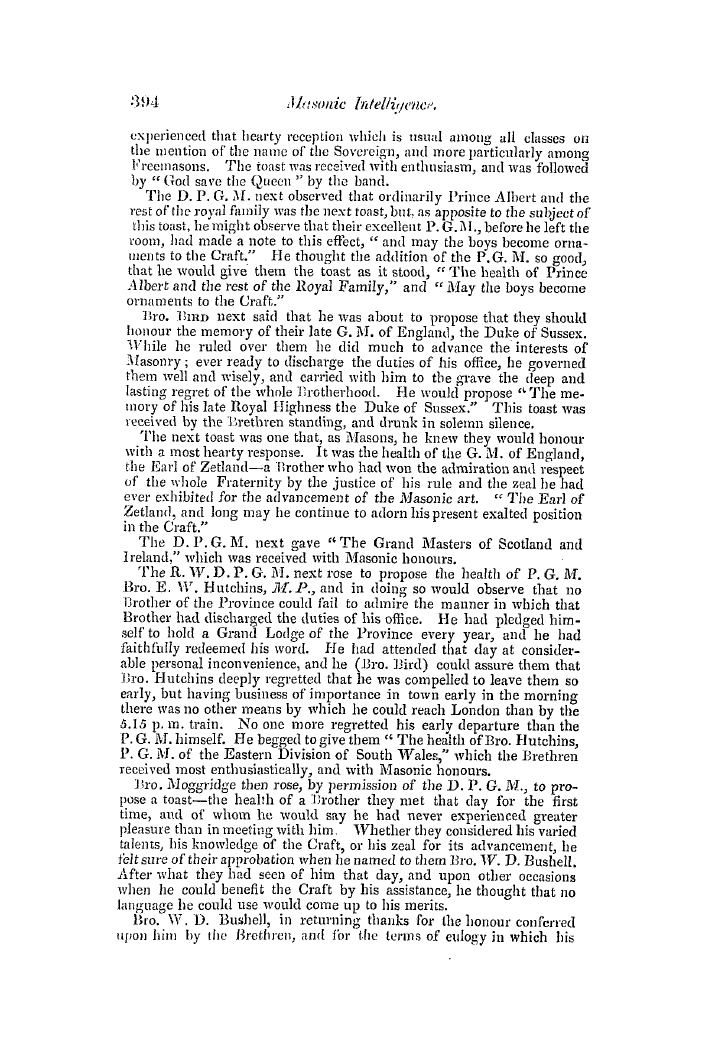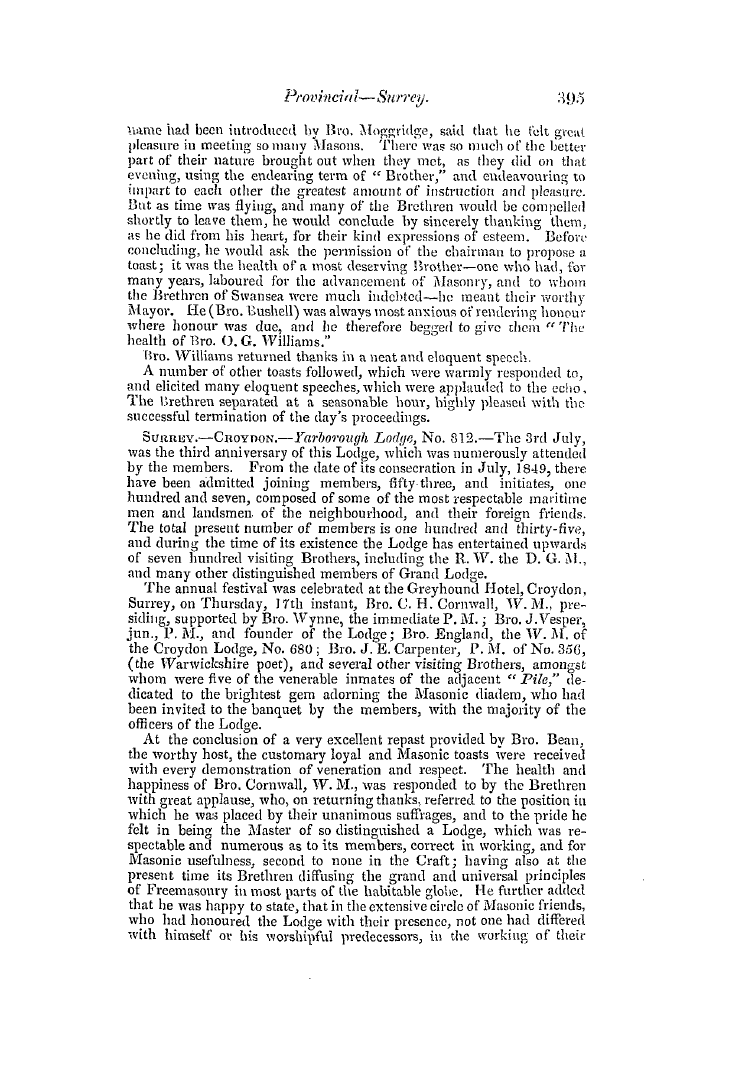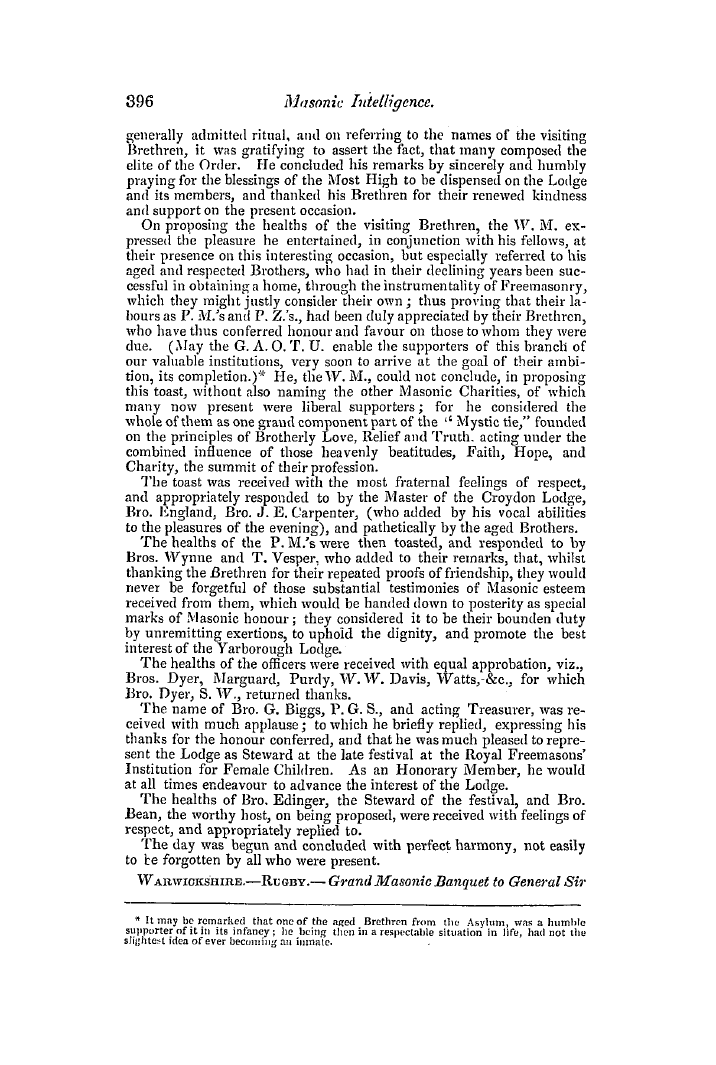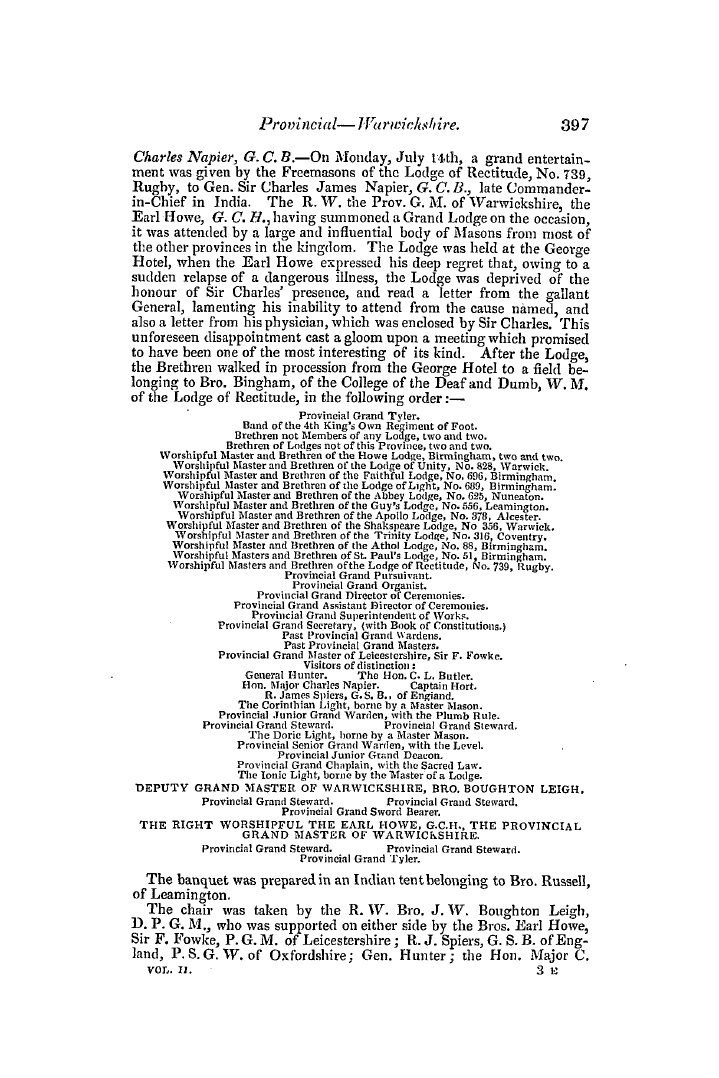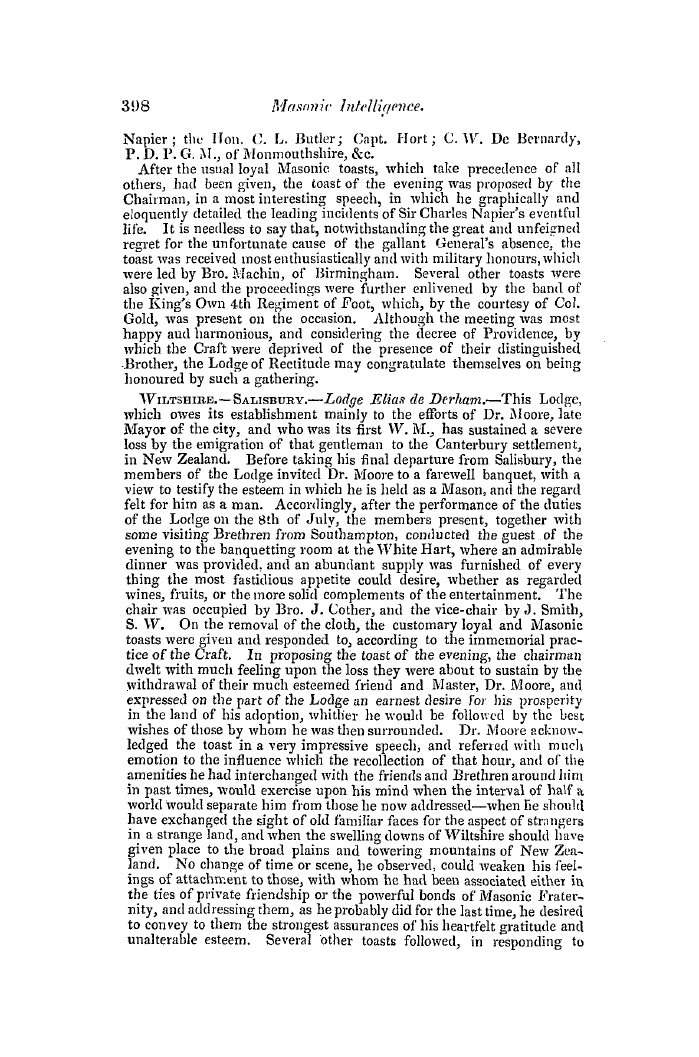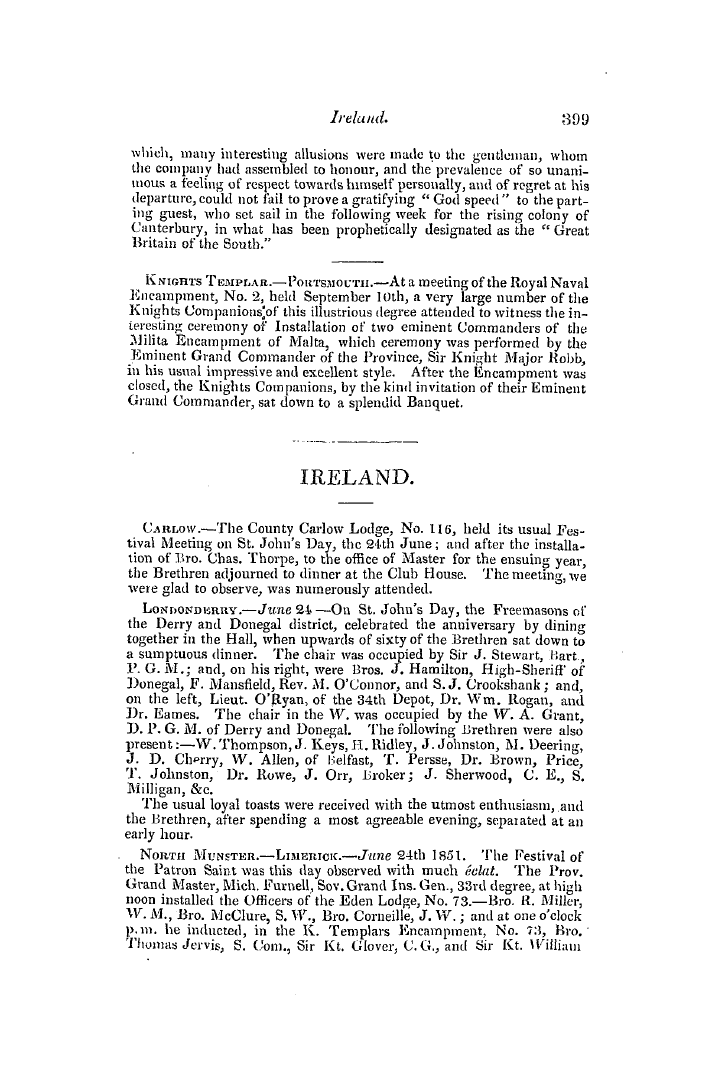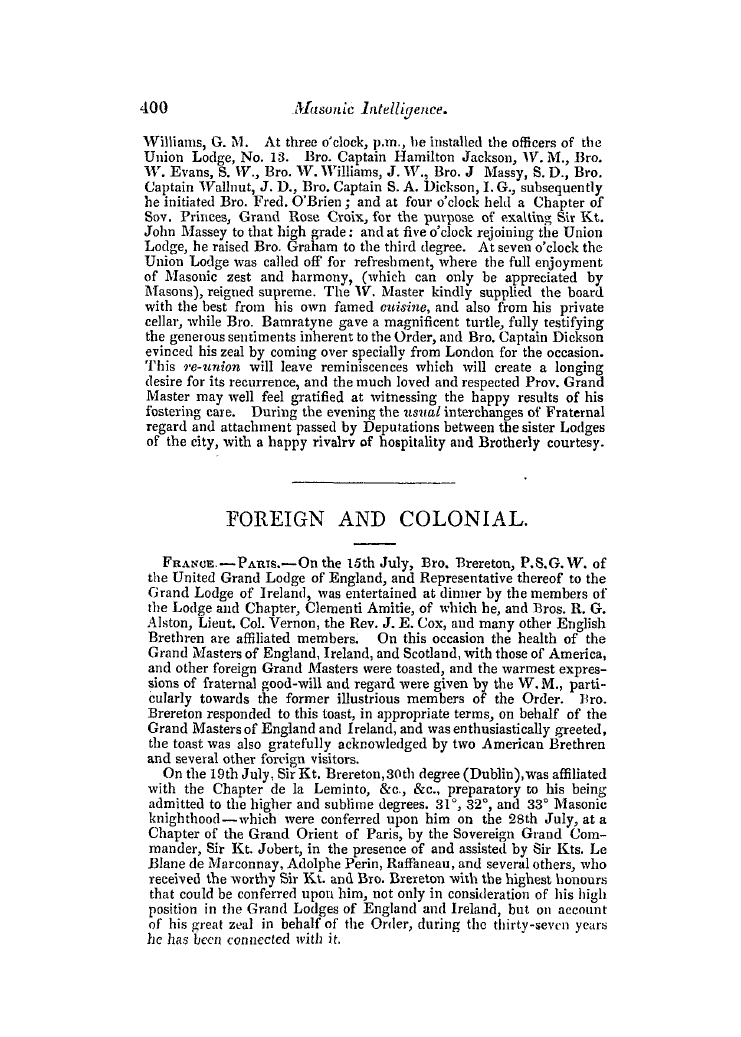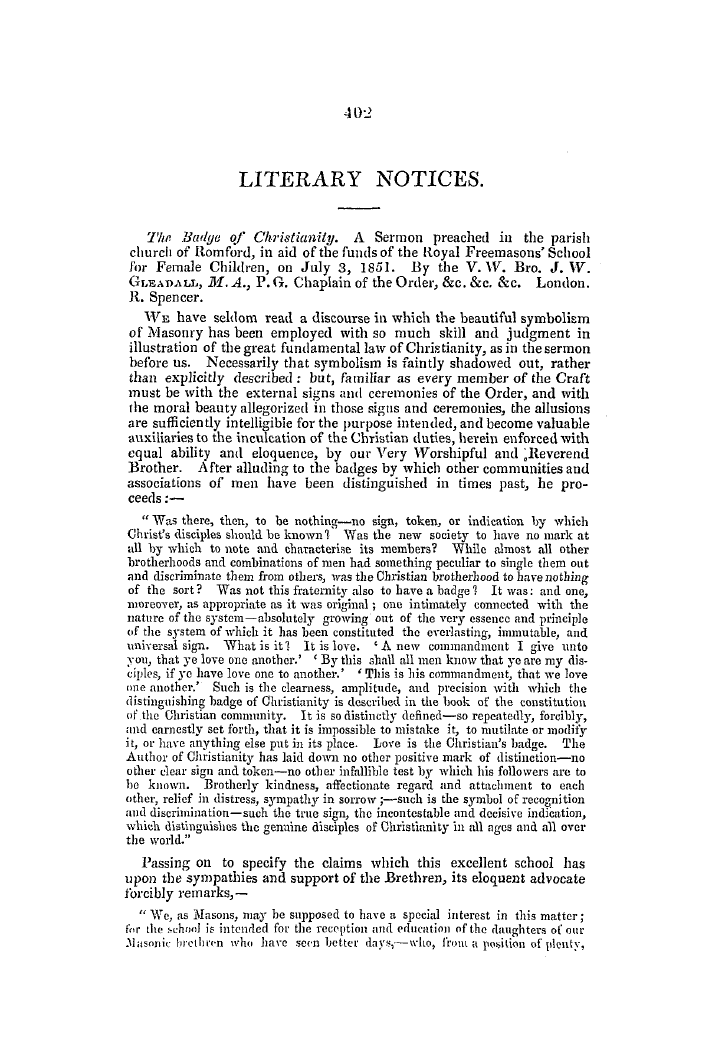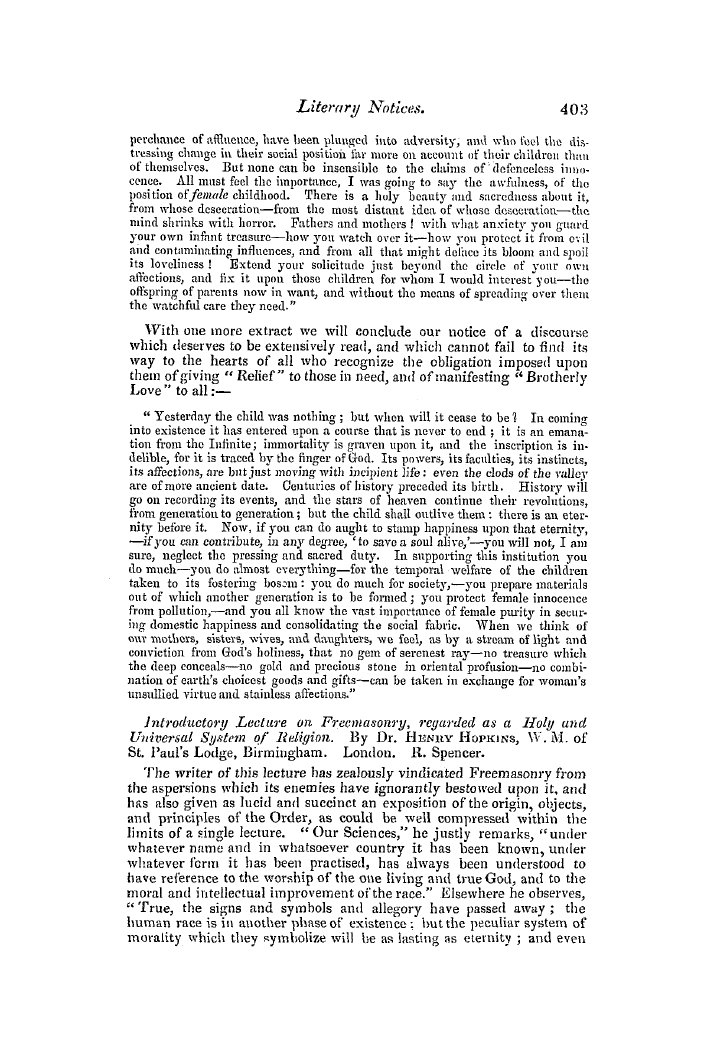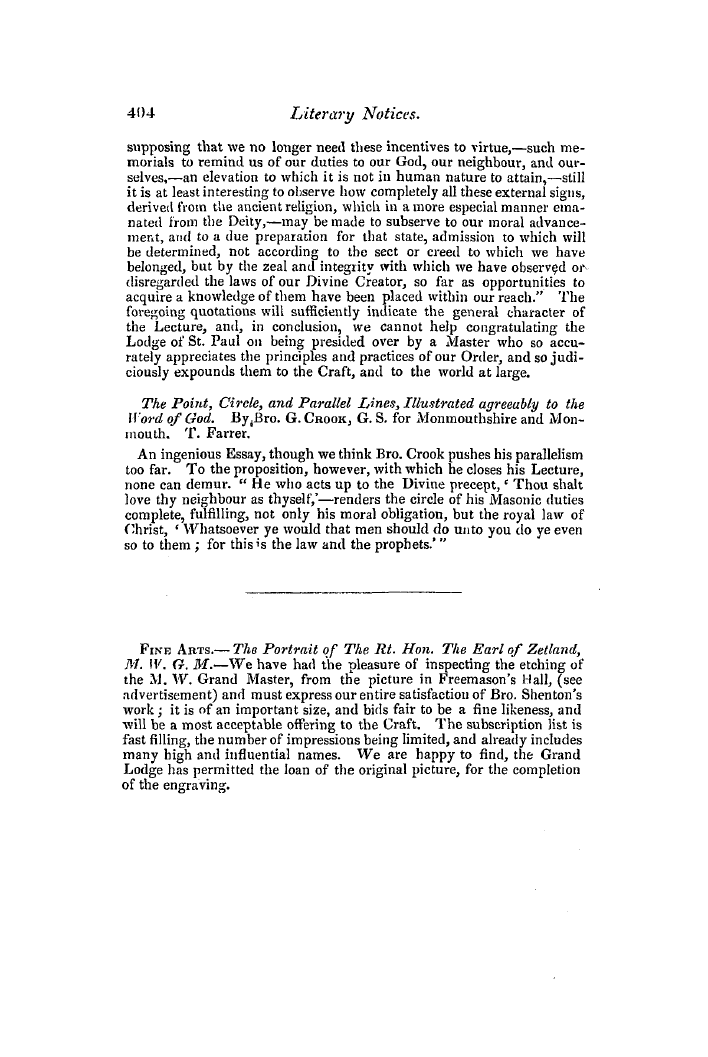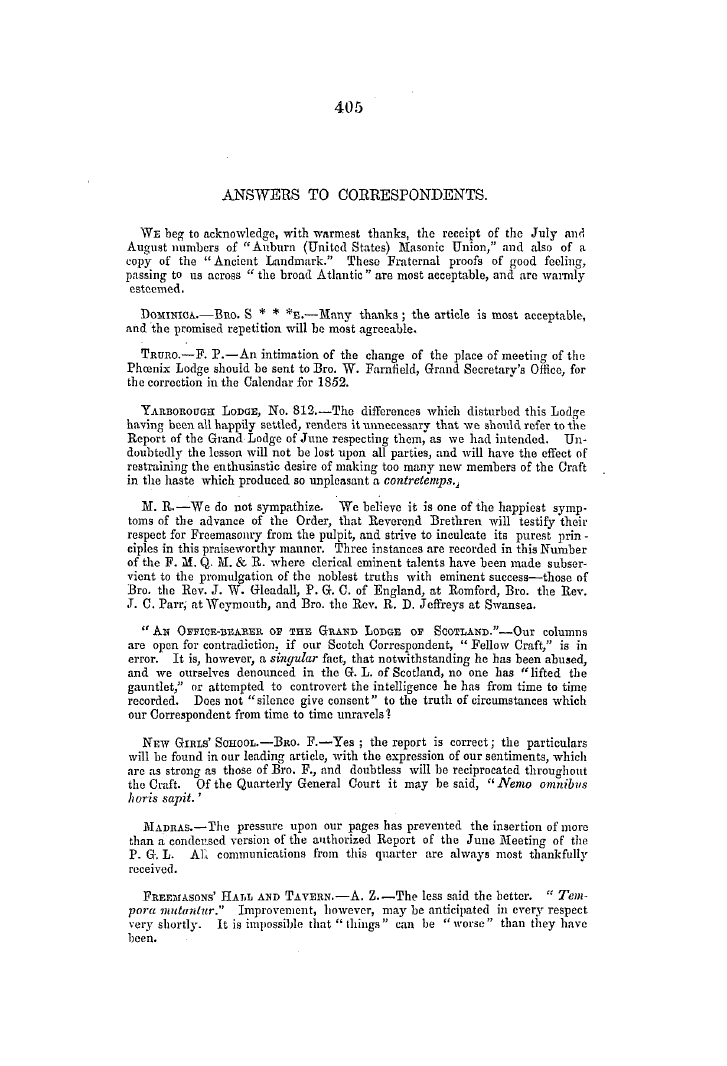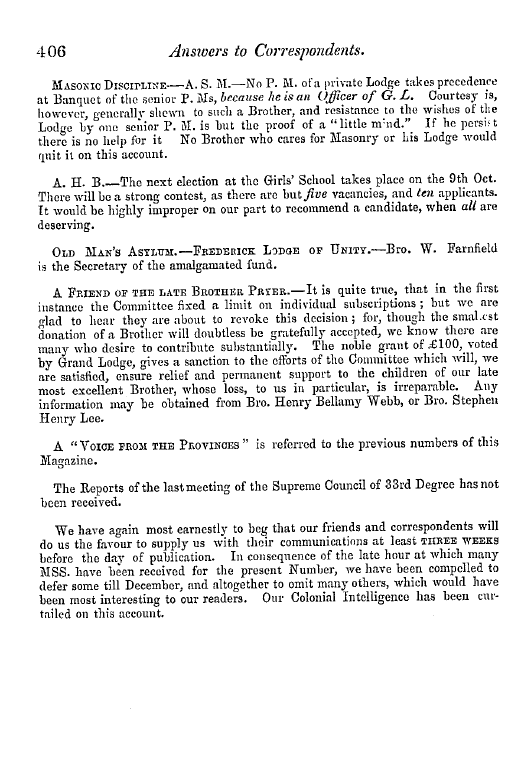-
Articles/Ads
Article ANCIENT MASONS' MARKS. ← Page 3 of 5 →
Note: This text has been automatically extracted via Optical Character Recognition (OCR) software.
Ancient Masons' Marks.
and marked b y another person before they were set aside as perfect ; ancl in confirmation of the correctness of then statement ancl proper interpretation of the paintings or carvings which they inspected , it was observed—towards the temporary conclusion of that fiery struggle , which raged betw-een the d ying embers of Paganism , and the new-born
light of Christianity , "that at the destruction of the Temple of Serapis , certain cruciform characters were found engraven on stones . Thus both Christians and Idolaters claimed a symbol of their respective creeds . " But the cross was known to the antients long previous to the Christian a * ra ; to the Jews , the brazen serpent of the wilderness , was
the prototype of that cross , on which the Redeemer gave up his life , as an expiation for a guilty world . Among the Egyptians , we find the Goddess of Justice and Truth represented in their hierogl yp hics , with the cross and circle on her knee , the former figure being with them looked upon as the symbol of life to come . Ancl , lastly , unless
our memory much misleads us , the same symbol has been disentombed b y Layard , from the dust of unreckoned centuries , in those lands where the human race first dwelt ,
and the tree of life threw out its mighty arms , destined , alas ! soon to wither , ancl almost to decay , until the advent of the Messiah raised a nobler ancl more heavenward stem , upon -which whosoever leaneth shall never fall . Every one is aware of the importance assigned to " squares , angles , ancl perpendiculars " in Masonry , ancl , it may be said ,
produce the base line of a ri g ht angle J _ and you have the Tan Cross—a simple combination , of two strai ght lines ; now , in that wdiich is but a mark with the chisel , whether bearing a mystical meaning or not , can the difference be felt , wdiich assuredl y there would be , between a tree painted b y a raw pupil in the academy , and foliage as seen
in a masterpiece b y Poussin , The idea of a Gothic church is simple ; as constructed by those wondrous artificers of the middle ages , it is more—it is sublime ; and yet it did not , like the heathen goddess , spring into existence perfect , but was the slow and stead y , it may be added the unnoticed , growth of centuries .
And with that growth of a style of architecture wdiich , on what princi p le we know not , was half a century ago called barbarous , the mark well known to Masons , but for long Utile heeded , and alluded lo b y Clavel , in his "Histoire Pittcrcsque dc la Franc Mnconnairc , " ; i " ce si » -nc bicn
Note: This text has been automatically extracted via Optical Character Recognition (OCR) software.
Ancient Masons' Marks.
and marked b y another person before they were set aside as perfect ; ancl in confirmation of the correctness of then statement ancl proper interpretation of the paintings or carvings which they inspected , it was observed—towards the temporary conclusion of that fiery struggle , which raged betw-een the d ying embers of Paganism , and the new-born
light of Christianity , "that at the destruction of the Temple of Serapis , certain cruciform characters were found engraven on stones . Thus both Christians and Idolaters claimed a symbol of their respective creeds . " But the cross was known to the antients long previous to the Christian a * ra ; to the Jews , the brazen serpent of the wilderness , was
the prototype of that cross , on which the Redeemer gave up his life , as an expiation for a guilty world . Among the Egyptians , we find the Goddess of Justice and Truth represented in their hierogl yp hics , with the cross and circle on her knee , the former figure being with them looked upon as the symbol of life to come . Ancl , lastly , unless
our memory much misleads us , the same symbol has been disentombed b y Layard , from the dust of unreckoned centuries , in those lands where the human race first dwelt ,
and the tree of life threw out its mighty arms , destined , alas ! soon to wither , ancl almost to decay , until the advent of the Messiah raised a nobler ancl more heavenward stem , upon -which whosoever leaneth shall never fall . Every one is aware of the importance assigned to " squares , angles , ancl perpendiculars " in Masonry , ancl , it may be said ,
produce the base line of a ri g ht angle J _ and you have the Tan Cross—a simple combination , of two strai ght lines ; now , in that wdiich is but a mark with the chisel , whether bearing a mystical meaning or not , can the difference be felt , wdiich assuredl y there would be , between a tree painted b y a raw pupil in the academy , and foliage as seen
in a masterpiece b y Poussin , The idea of a Gothic church is simple ; as constructed by those wondrous artificers of the middle ages , it is more—it is sublime ; and yet it did not , like the heathen goddess , spring into existence perfect , but was the slow and stead y , it may be added the unnoticed , growth of centuries .
And with that growth of a style of architecture wdiich , on what princi p le we know not , was half a century ago called barbarous , the mark well known to Masons , but for long Utile heeded , and alluded lo b y Clavel , in his "Histoire Pittcrcsque dc la Franc Mnconnairc , " ; i " ce si » -nc bicn































































